Screw Machined Parts and Products
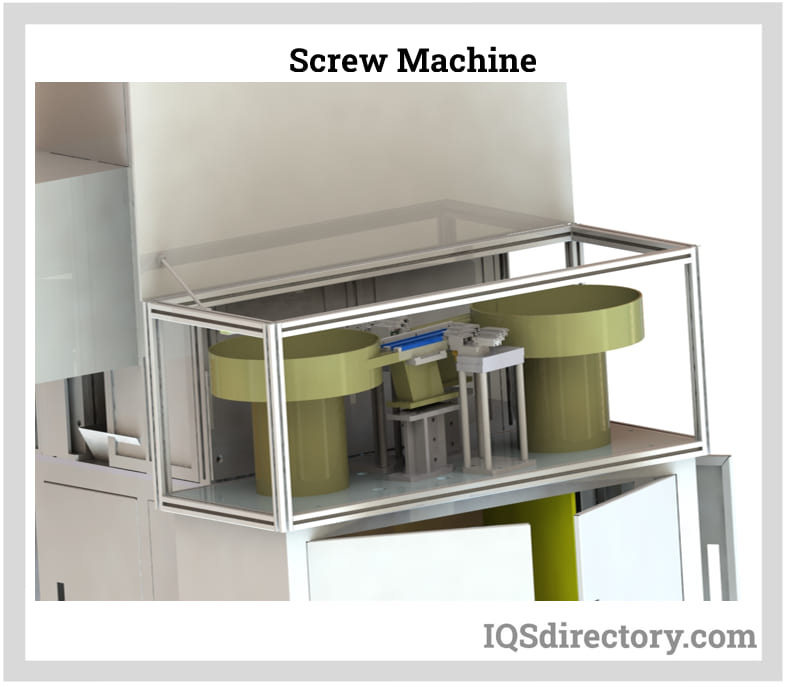
Screw machined parts are complex pieces that are typically cylindrical and threaded and a screw machined product is a family of automatic lathes for small to medium-sized components...
Please fill out the following form to submit a Request for Quote to any of the following companies listed on
This guide contains everything you need to know about thread rolling and screw machine products.
You will learn about topics such as:
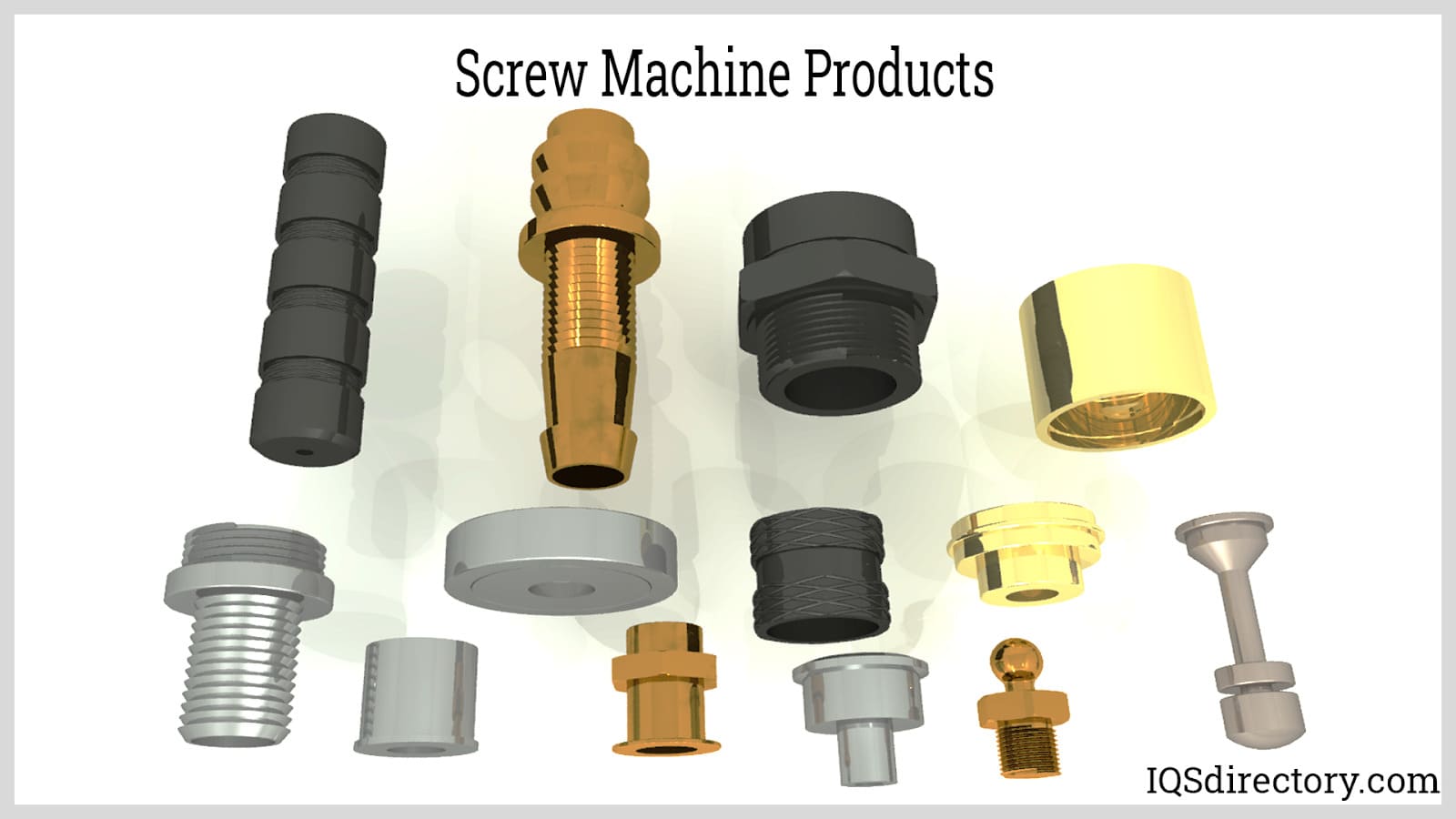
Thread rolling is a threading process that involves deforming metal stock by pressing it between dies to produce external threads on the surface. This technique can also generate internal threads via a procedure known as thread forming. Unlike conventional threading methods like thread cutting, thread rolling is a non-subtractive approach, meaning it doesn't involve removing metal from the stock. Rolled threaded fasteners offer benefits such as enhanced thread strength, accurate final measurements, superior surface finish, and reduced friction coefficients.
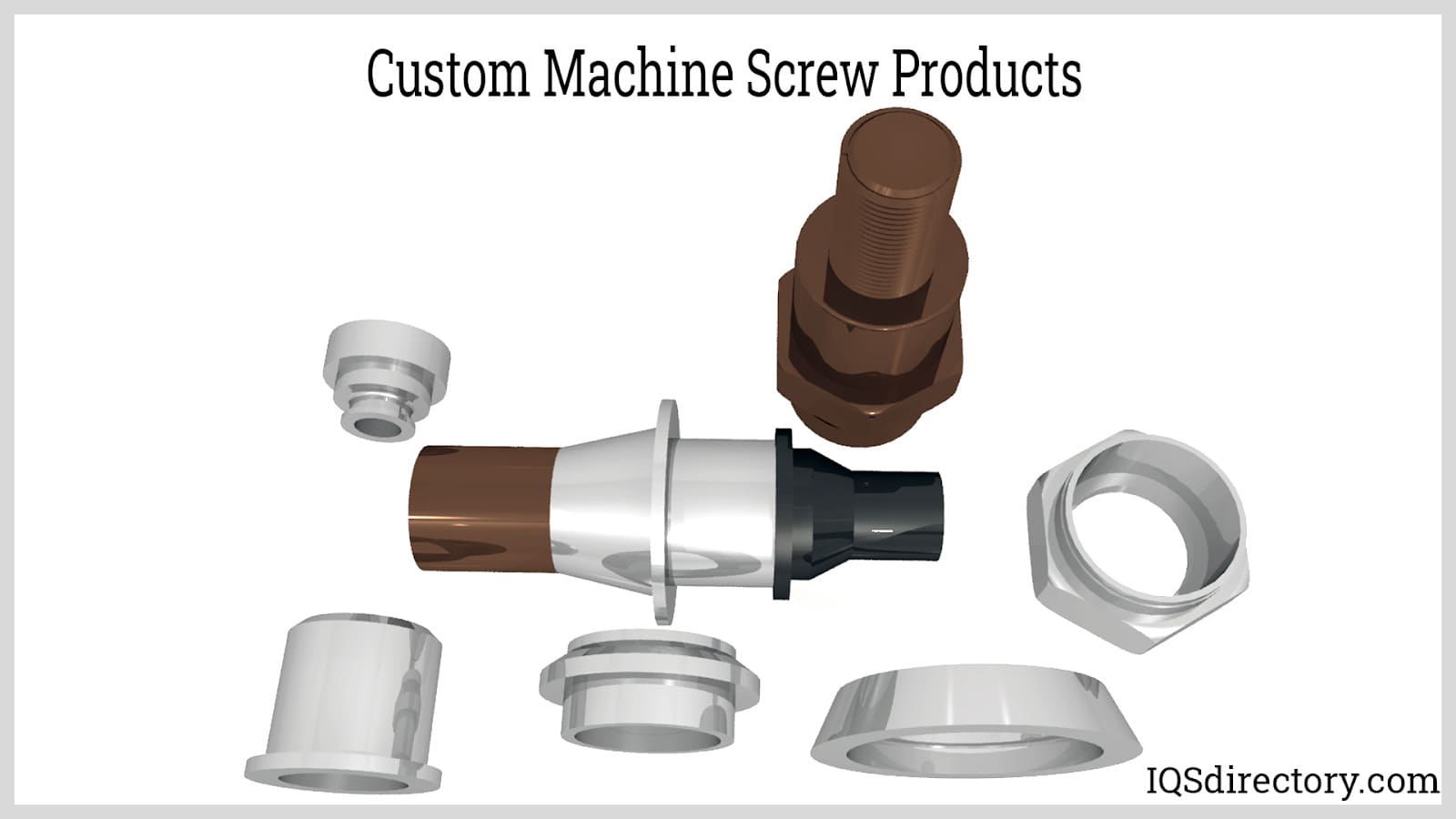
Screw machine products include threaded machine items such as bolts, nuts, and screws. These threaded components can be grouped based on their purpose. Bolts, nuts, and screws serve as structural elements or fasteners. Threaded fasteners may also be integrated into parts, creating threaded fittings.
Threaded fasteners are utilized to establish non-permanent connections, allowing for components to be mechanically loosened or disassembled. On the other hand, power screws and lead screws function as mechanical devices or drives, serving as mechanisms to regulate movement and transmit force to other machine parts, thus playing an essential role in mechanical systems.
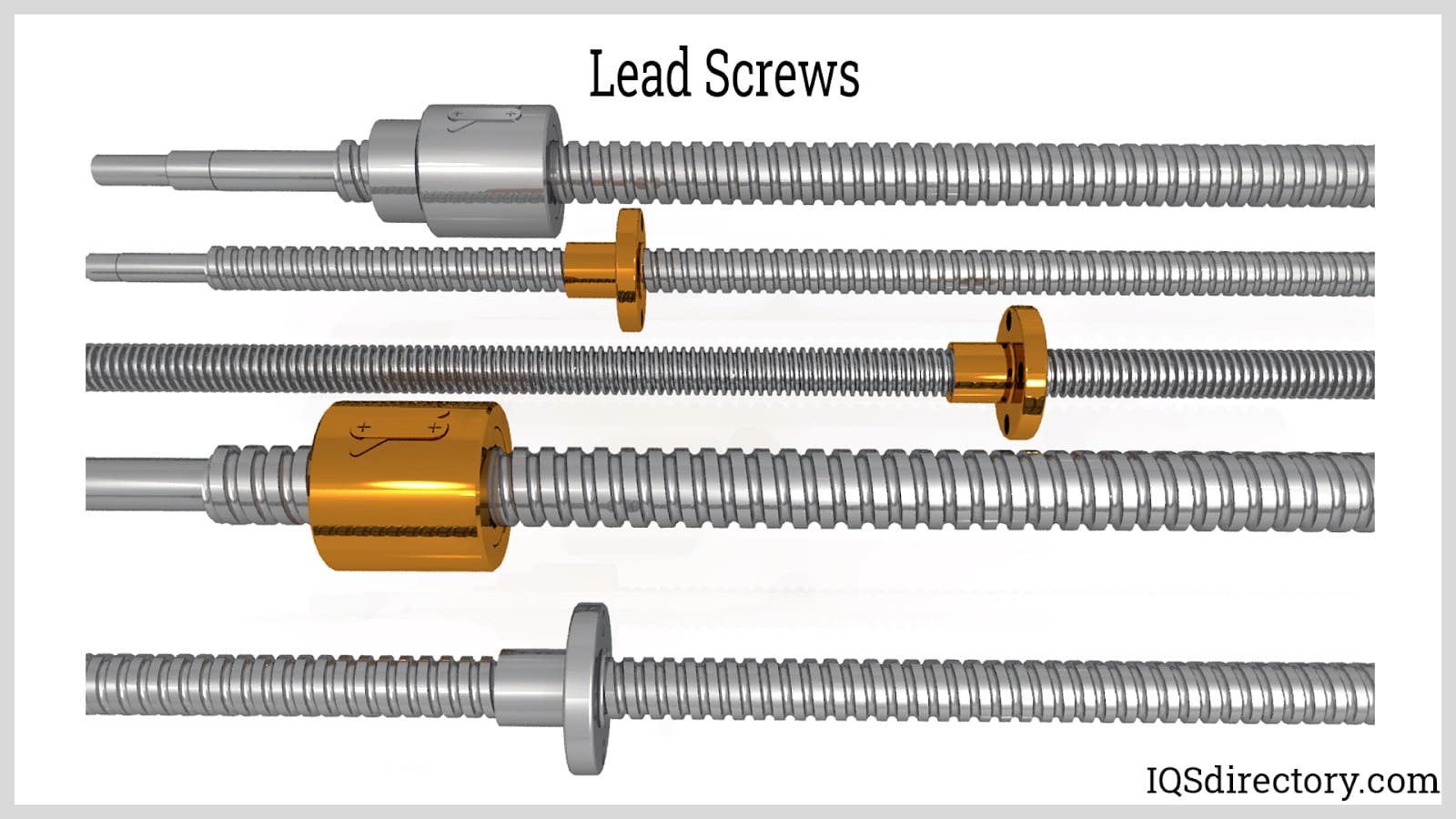
Screw threads can be classified according to their shapes.
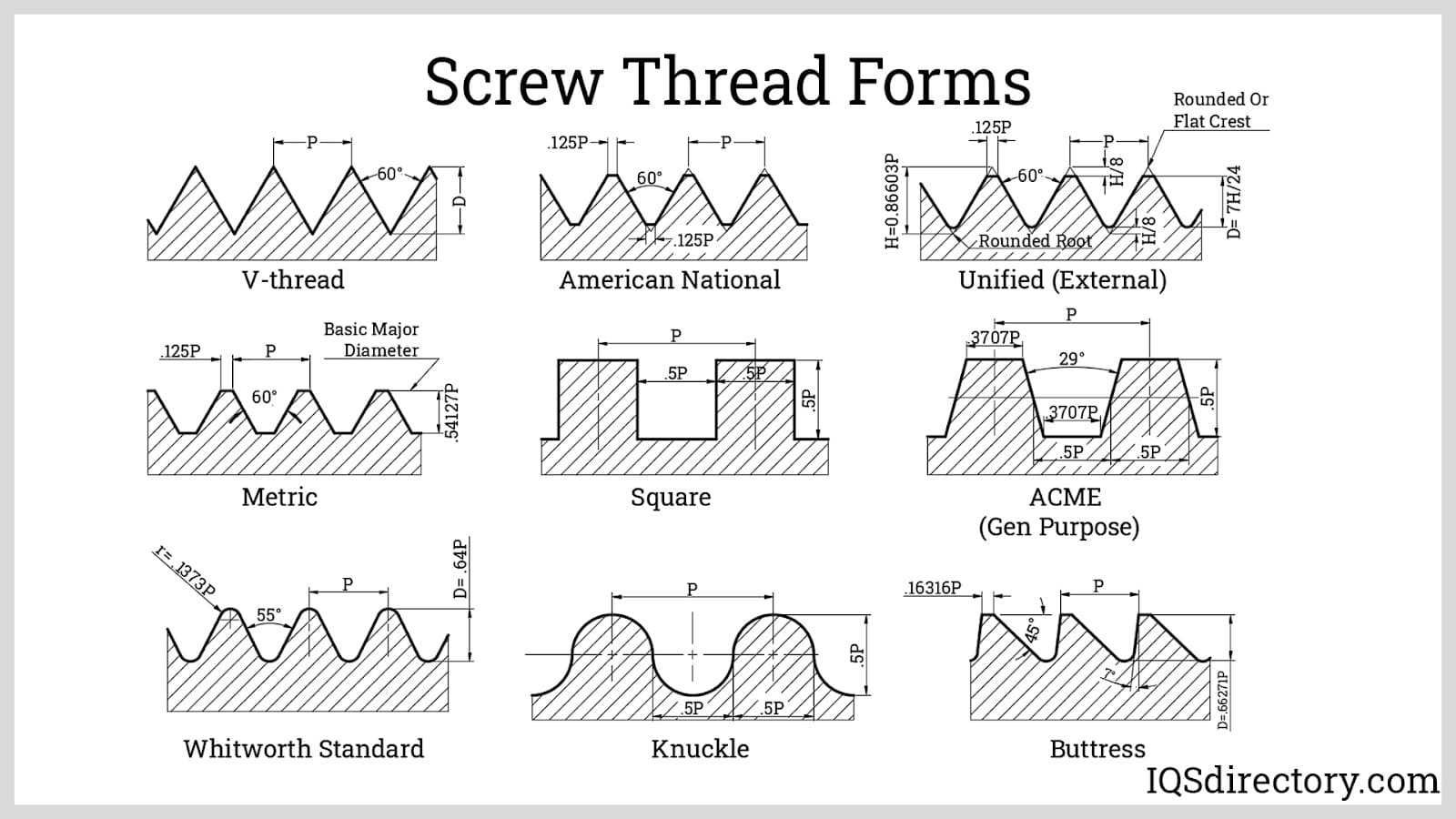

Thread generation processes are typically classified into three methods: subtractive, deformative, and additive, each differing in how the thread is shaped or formed. Subtractive processes, often referred to as cutting processes, are one of these methods. The following is a summary of these processes:
Tapping: Tapping is a thread machining process for producing internal threads. This is done using a tap which is a cylindrical or conical cutting tool. The tap has multiple cutting edges similar to an external thread. The internal thread is generated by rotating the tap while axially moving it deeper into the bore of the metal stock.
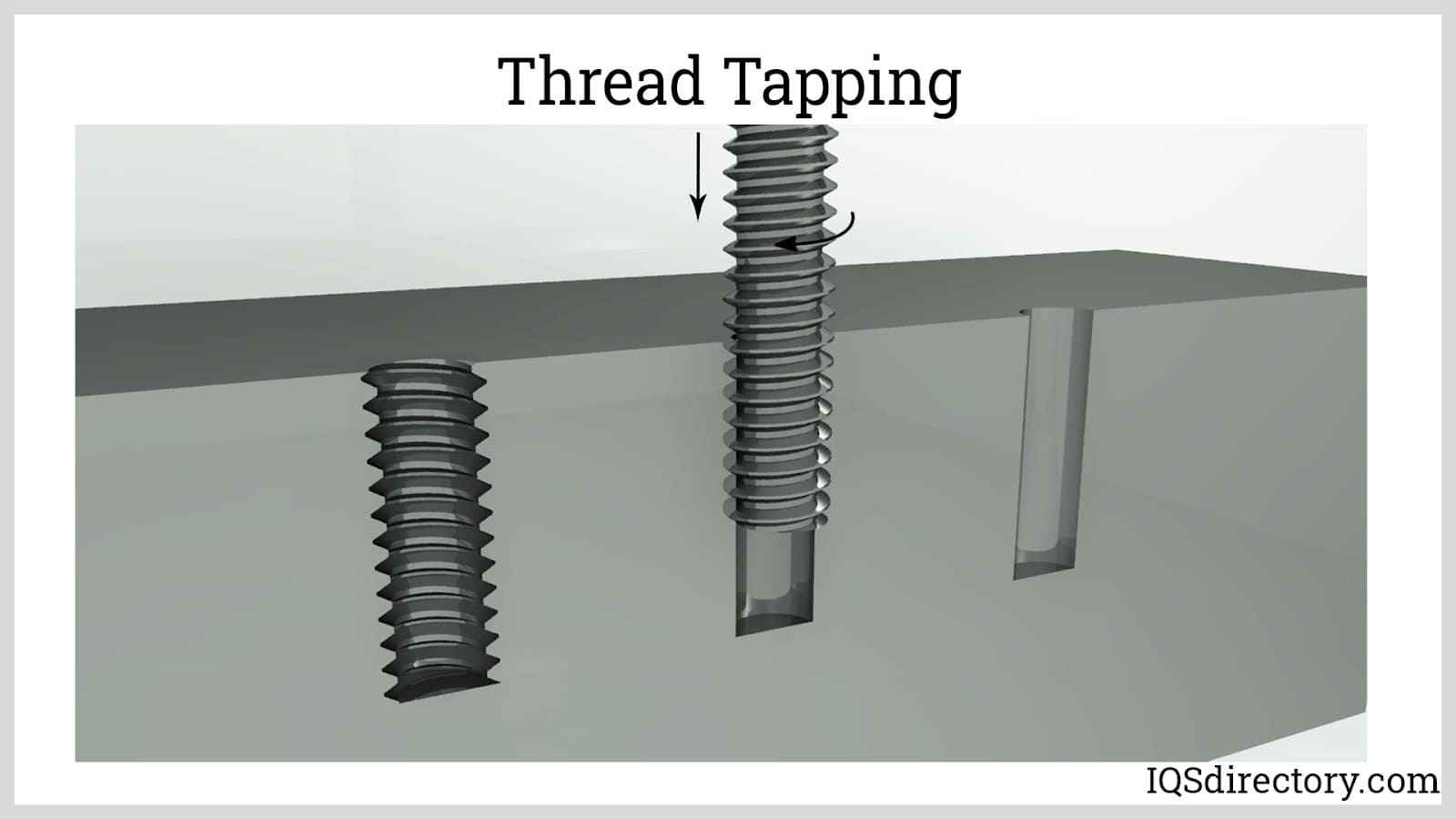
Die Threading: This process is used to produce external threads. Its method of applying force and cutting action is similar to tapping. A die is used to cut the metal stock with multiple cutting points similar to an internal thread. Different die designs exist which can be solid or self-opening.
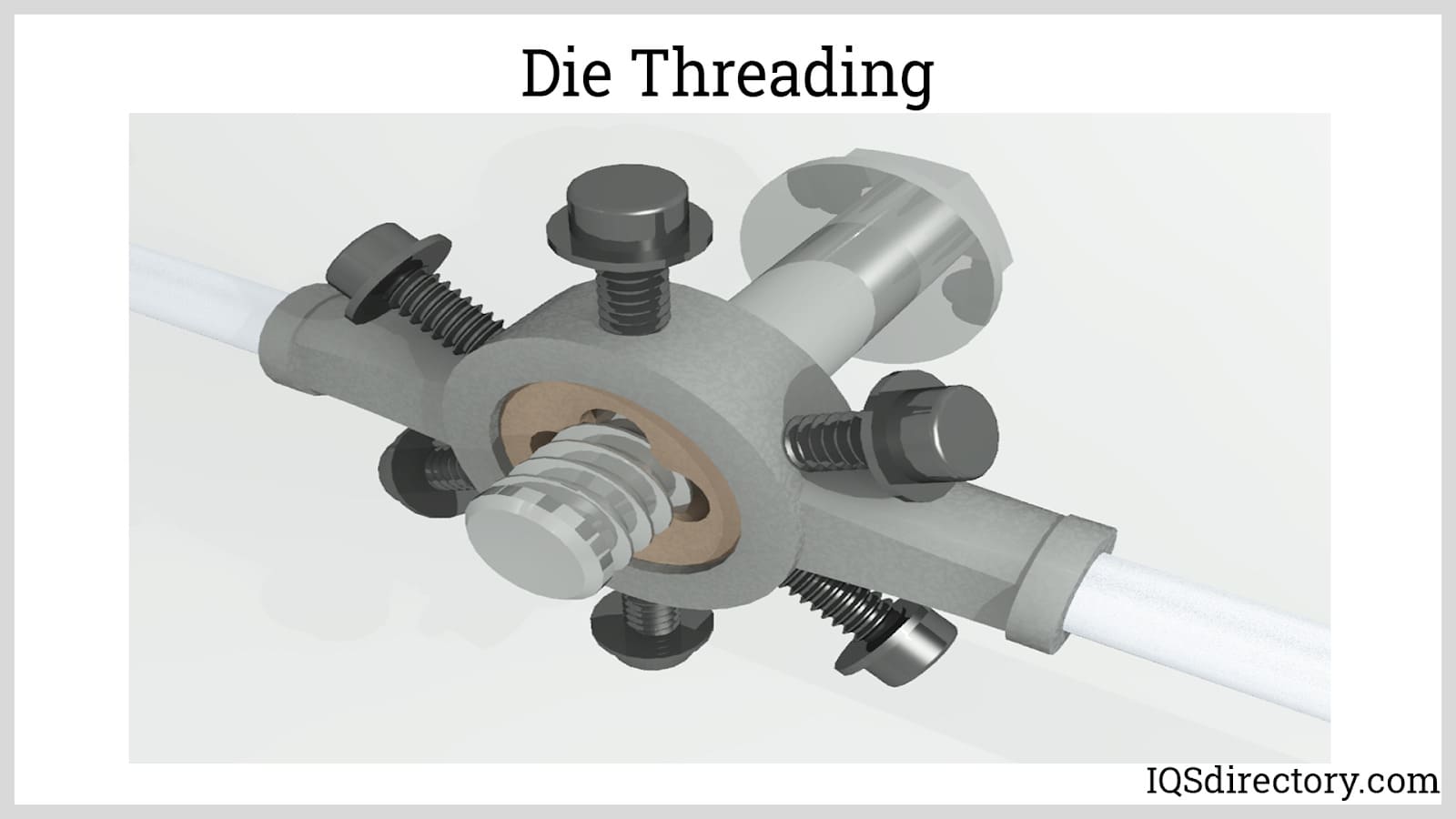
Single-point Cutting: Single-point cutting is done in a lathe machine where the metal stock is held and rotated. The cutting tool is mounted on a carriage fed linearly by a lead screw. This process can produce both internal and external threads. This process is slower than tapping or die-cutting. Its advantage is that only one cutting tool is required to produce different threads.

Chasing: This process uses a tool called a thread chaser which is several single-point cutting tools fitted together. The chaser is typically mounted on the carriage of a lathe which is indexed gradually to cut the thread.
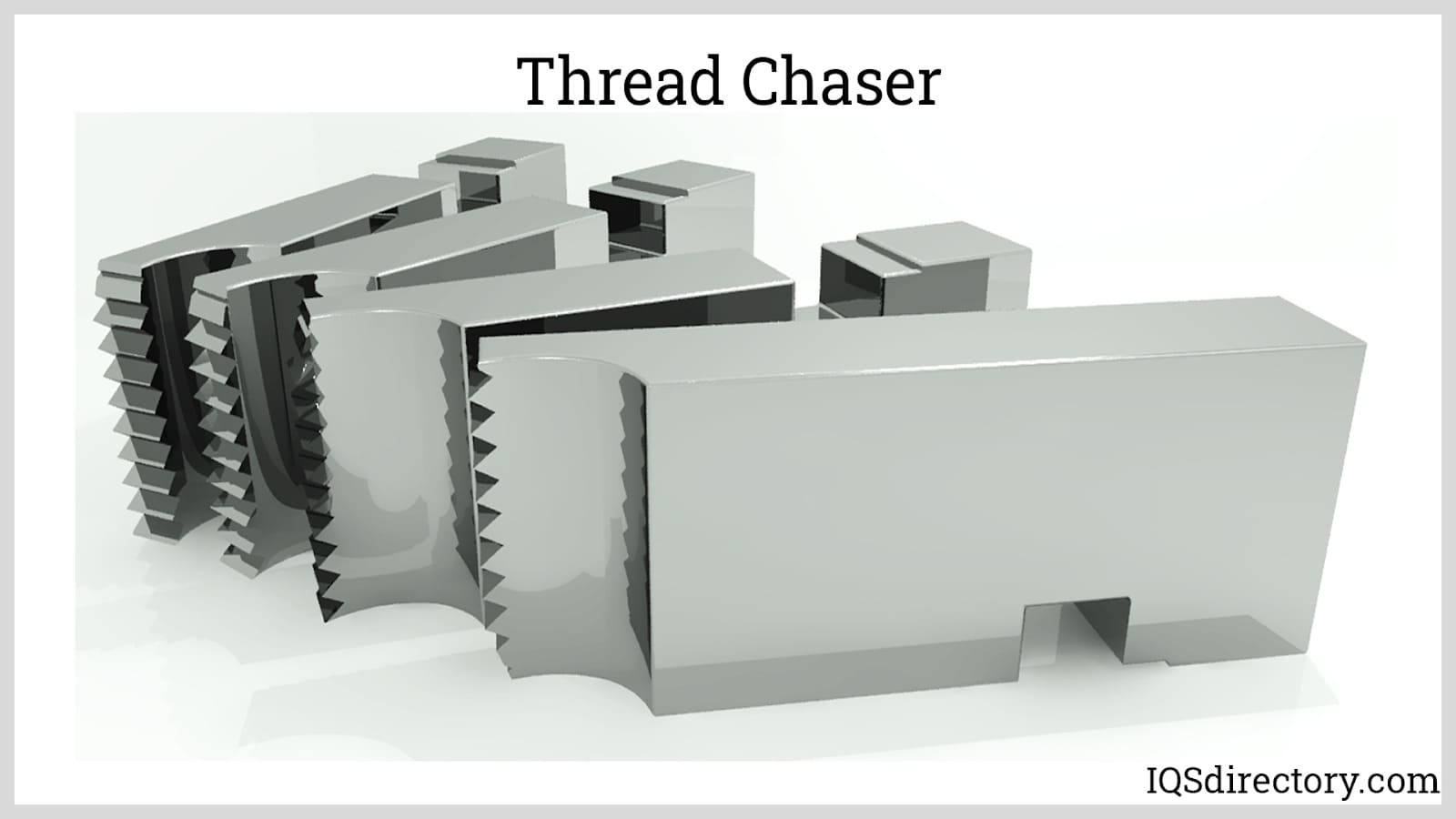
Milling: In this process, single or multiple rotary cutting tools are used to thread the stock. Aside from rotating the cutting tool and indexing it axially as seen in tapping and die-threading, the cutting tool is also revolved along the circumference of the threaded surface. Thread milling can generate both internal and external threads.
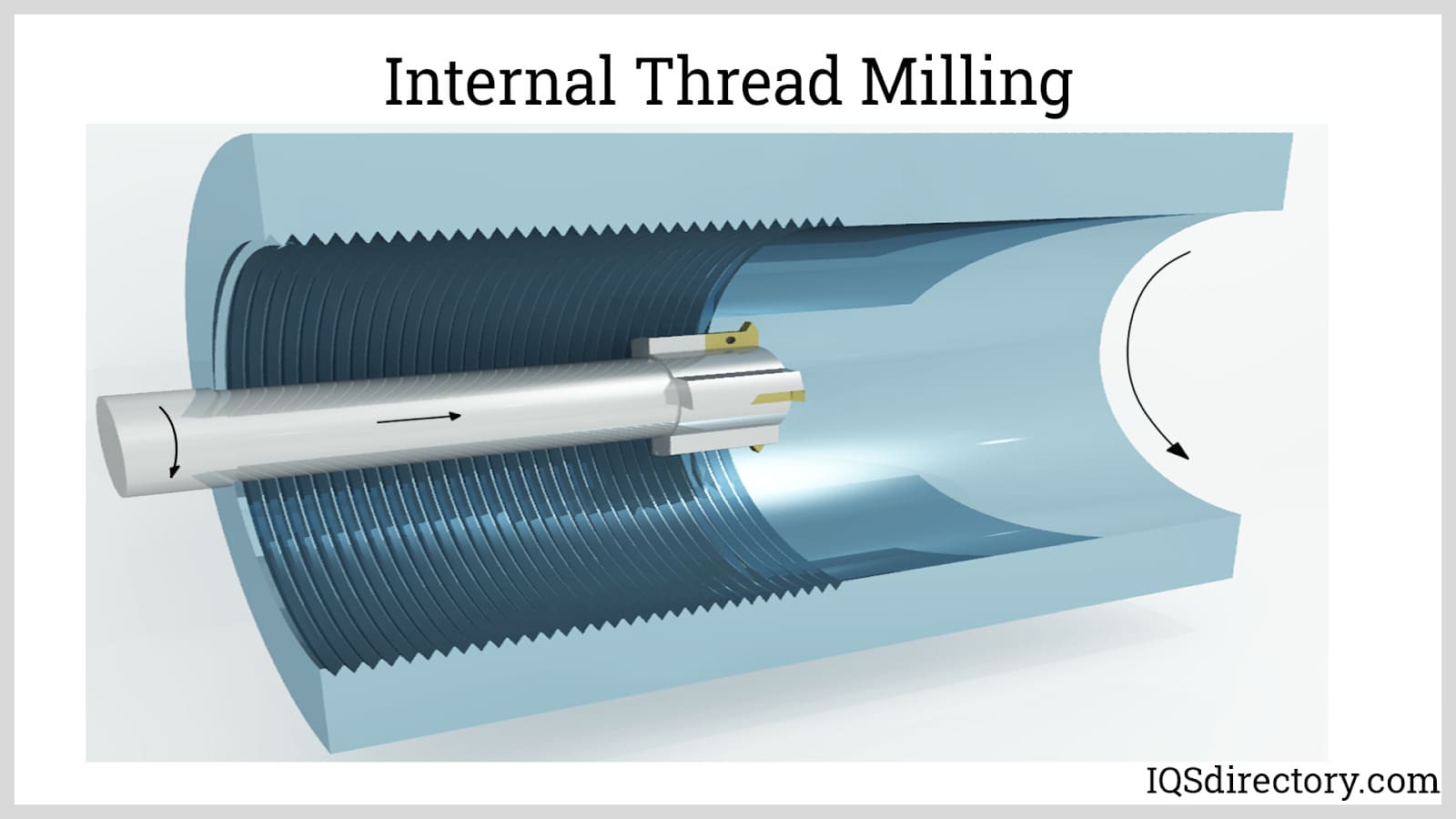
Grinding: Instead of cutting the stock, this process uses abrasive tools to remove metal. This is usually done in conjunction with other threading processes. Thread grinding is done to produce precision threads and threads with a good finish.
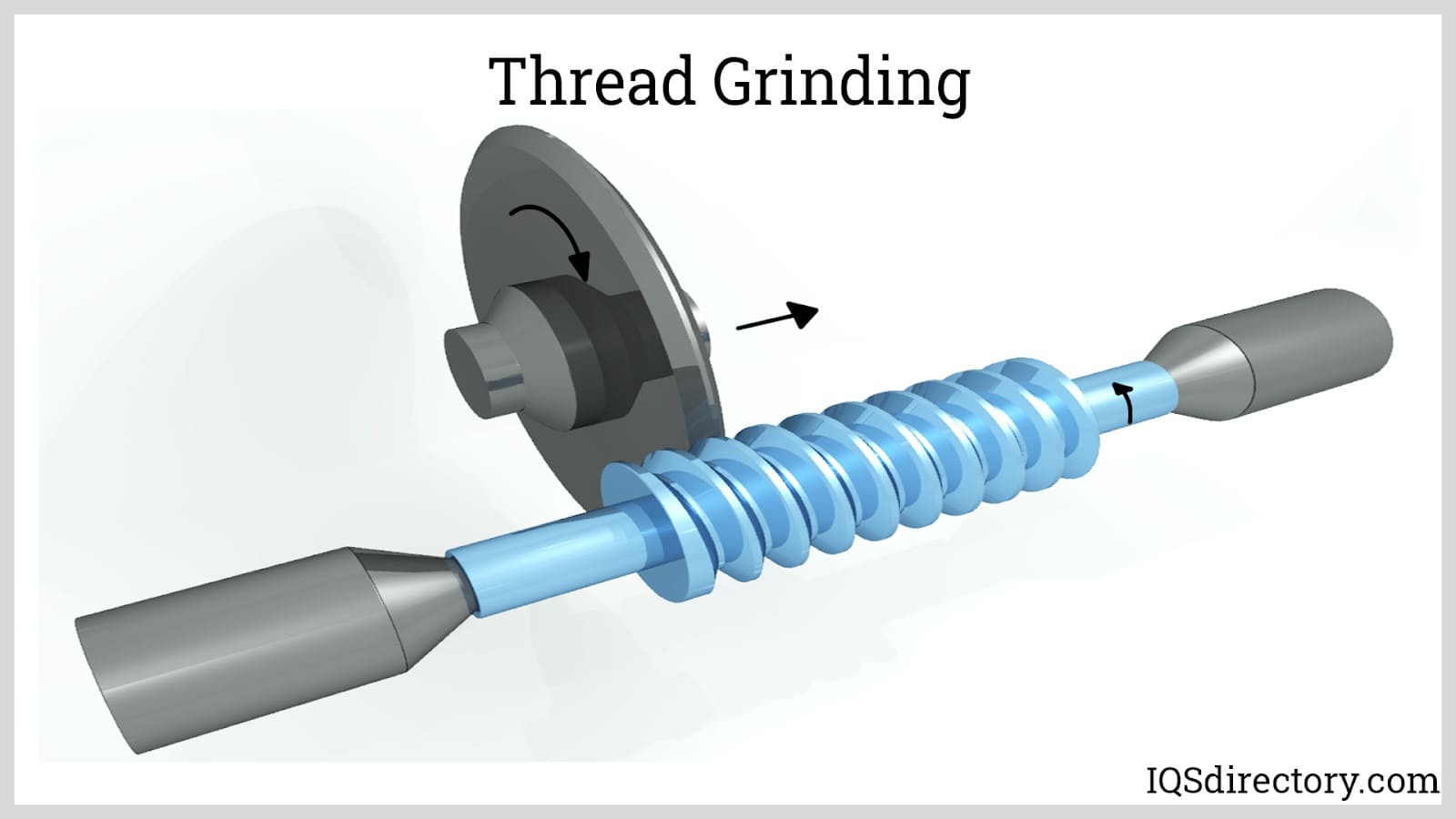
Deformation processes generate threads by working the metal stock to form its shape. This classification includes rolling and casting:
Rolling: As mentioned earlier, thread rolling is an external threading process that shapes the stock by passing it through roller dies. The roller dies have external thread-like rollers which contact and deform the surface of the stock. Thread rolling is generally faster than thread cutting since the shaping process only requires few passes.
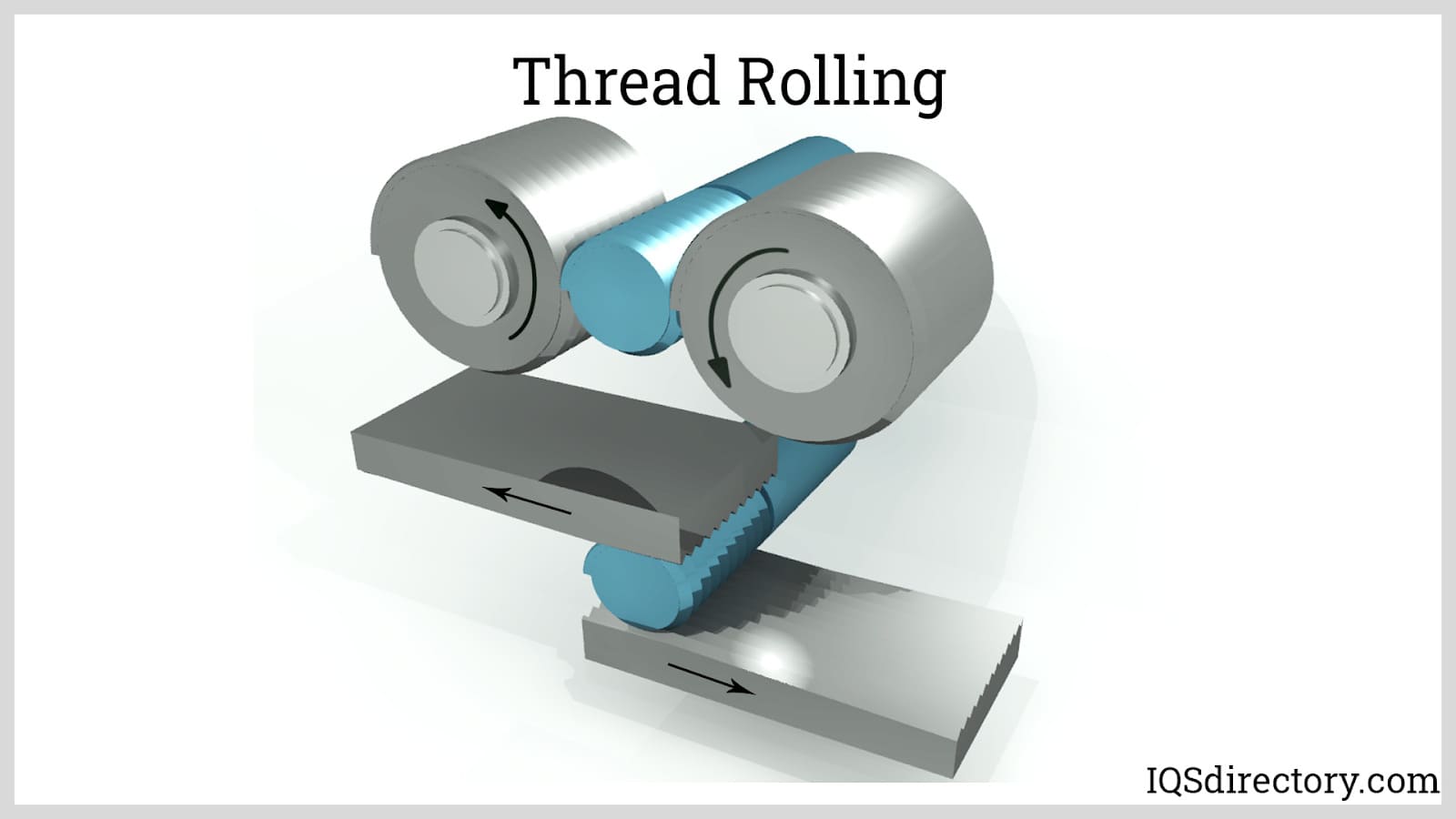
Casting: This process involves pouring or injecting the molten metal into a die or mold. The die contains the negative shape of the threaded part. This process requires secondary machining processes to produce accurate threads. This process is not suitable for making fine threads.
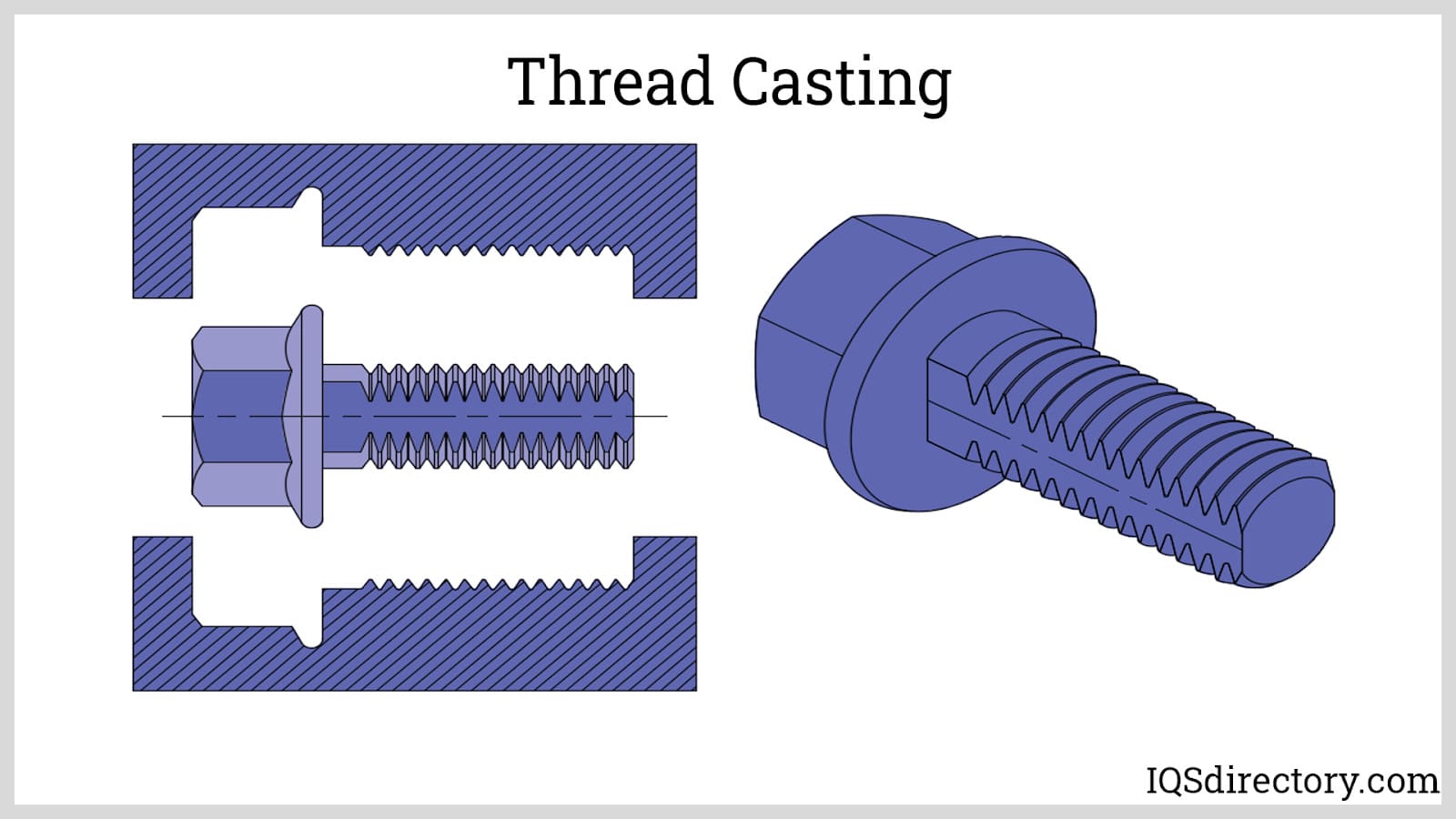
Finally, additive processes are methods of producing threads by gradually adding or depositing materials. These are extensively being used for producing plastic parts. Advancements in technology further extend the process for producing metal machine elements. To produce quality threads, it is used together with secondary processes such as grinding and lapping.
Some of the additive processes are stereolithography, selective laser sintering, and fused filament fabrication:
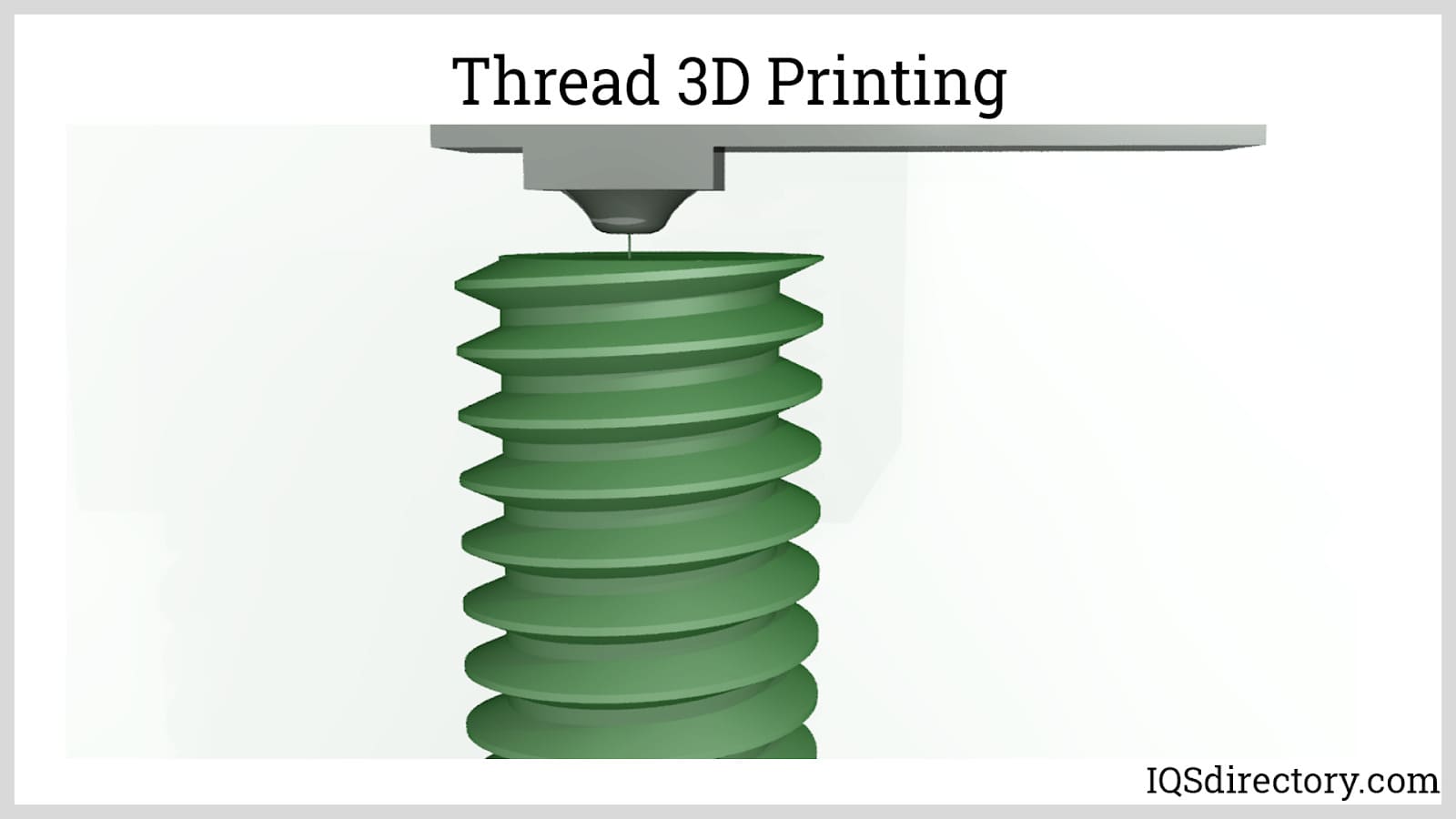
Using a rolled screw machine product comes with both advantages and disadvantages. The primary advantage of thread rolling is that it produces stronger surfaces and offers high dimensional accuracy. However, because this process relies on metal deformation, it is generally limited to soft metals and involves higher tooling costs.
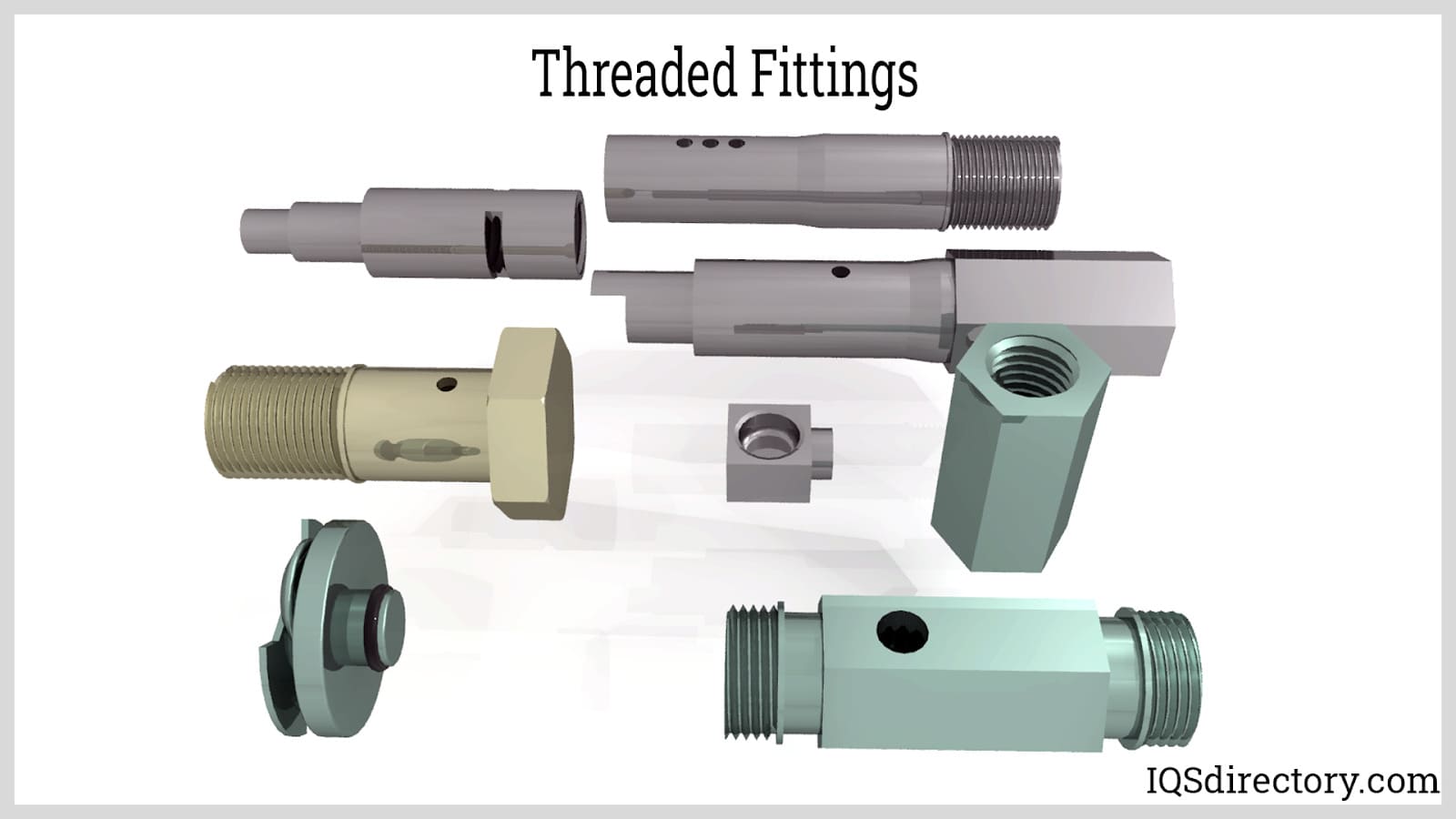
Listed below are the benefits of using rolled screws and bolts:
High thread strength: Thread rolling is usually done in relatively low temperatures making it a cold working process. Cold working is known to produce parts with higher strengths without the need for secondary heat treatment. This makes rolling suitable for threading materials that do not respond to heat treatment. Rolled threads are 10 to 20 percent stronger than cut or ground threads.
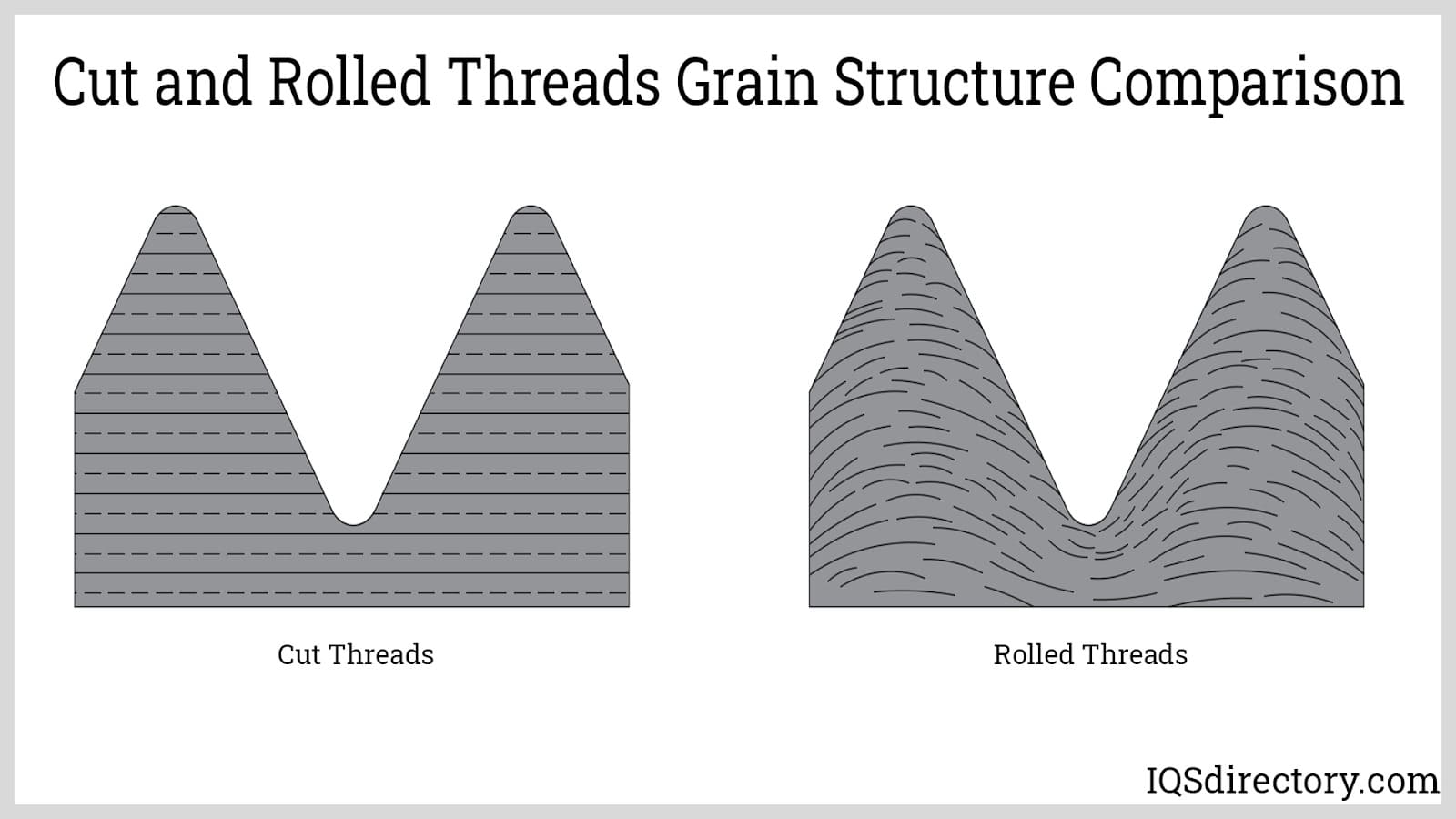
Precision threading: Since the dies used in thread rolling are mirror images of the threads to be generated and there is no material being removed from the stock, the process can produce parts with high precision and accuracy over long runs. This is true provided that the dies are accurate and made with sufficient hardness.
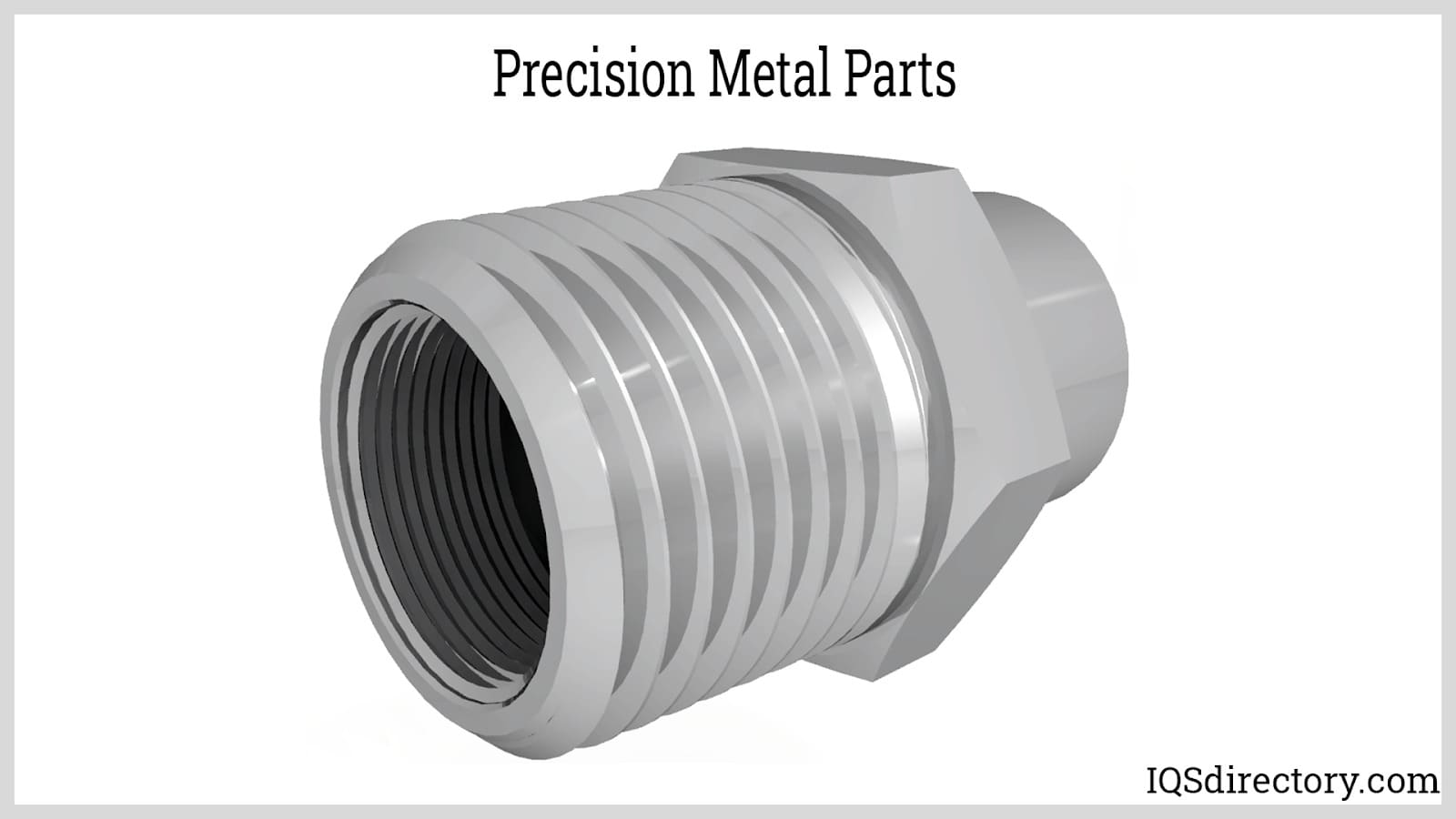
Lower cost brought by the efficient use of material: Since thread rolling is a deformative process, no amount of material is removed throughout the process. This leads to better energy utilization since there is no need to collect and recycle wasted materials.
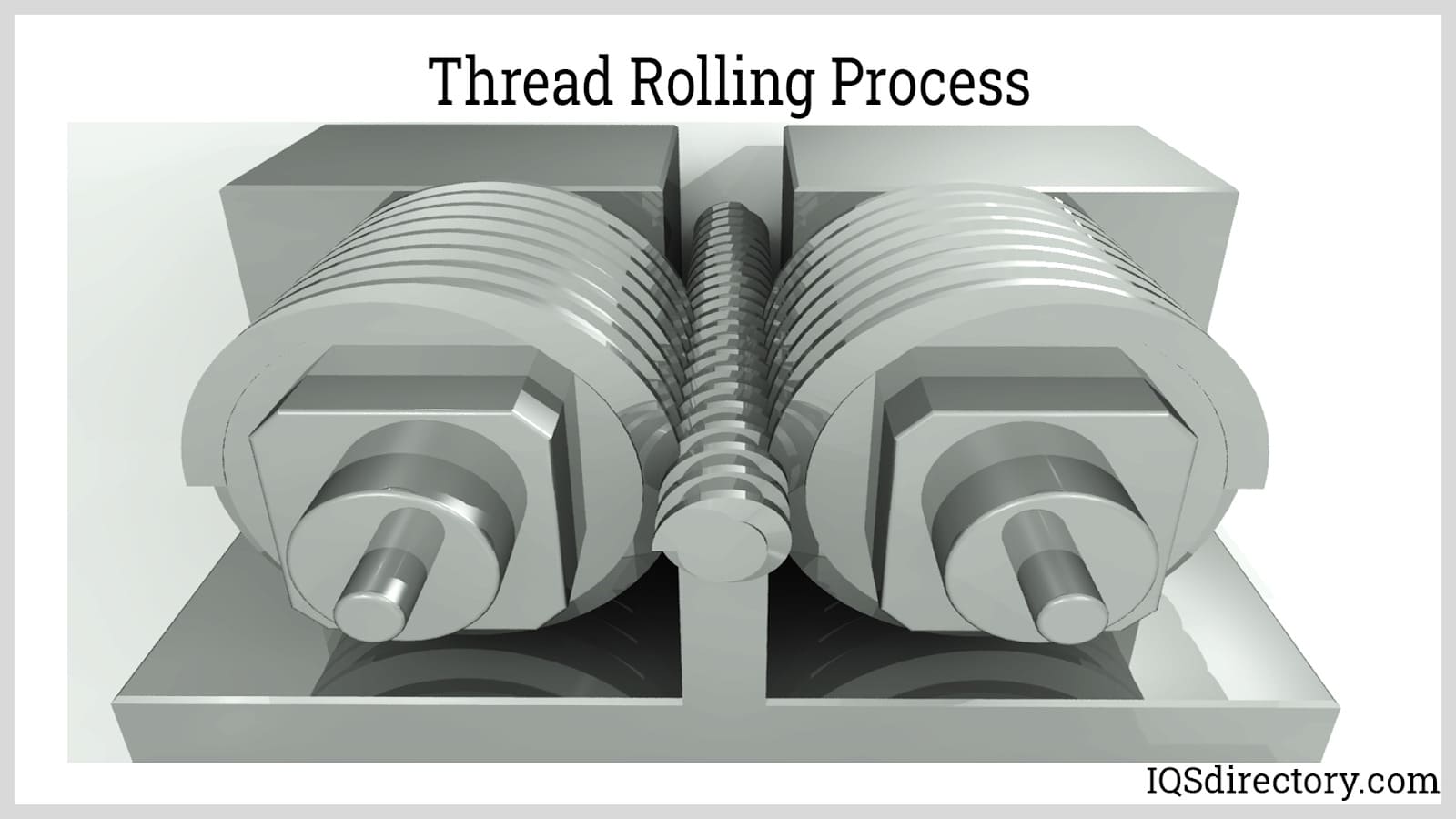
Below are the disadvantages of thread rolling. It can be seen that these mostly affect the manufacturer rather than the end-user. Ultimately, these contribute to the product cost making rolled threaded products, in some cases, more expensive than products produced from other processes.
Not practical for hard materials: Thread rolling is mostly done on malleable metals. Even though it is possible, thread rolling is not done for metals above 40 Rockwell C. Beyond this hardness level, thread grinding is more practical. Rolling hard materials significantly decreases tool life.
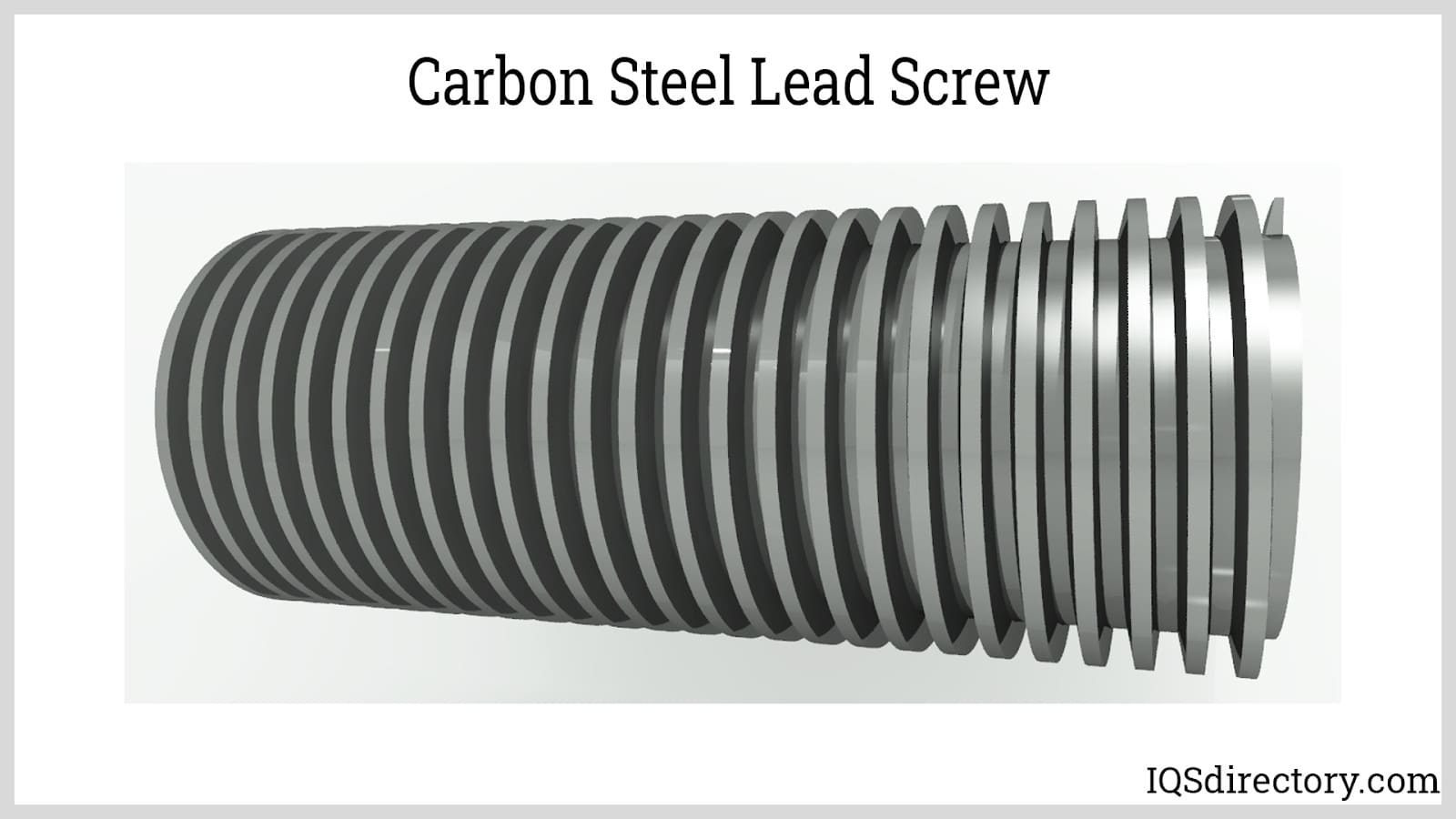
As with any machining process, several factors must be considered to ensure optimal operating conditions and product quality. Below are some of the key variables that impact thread rolling.
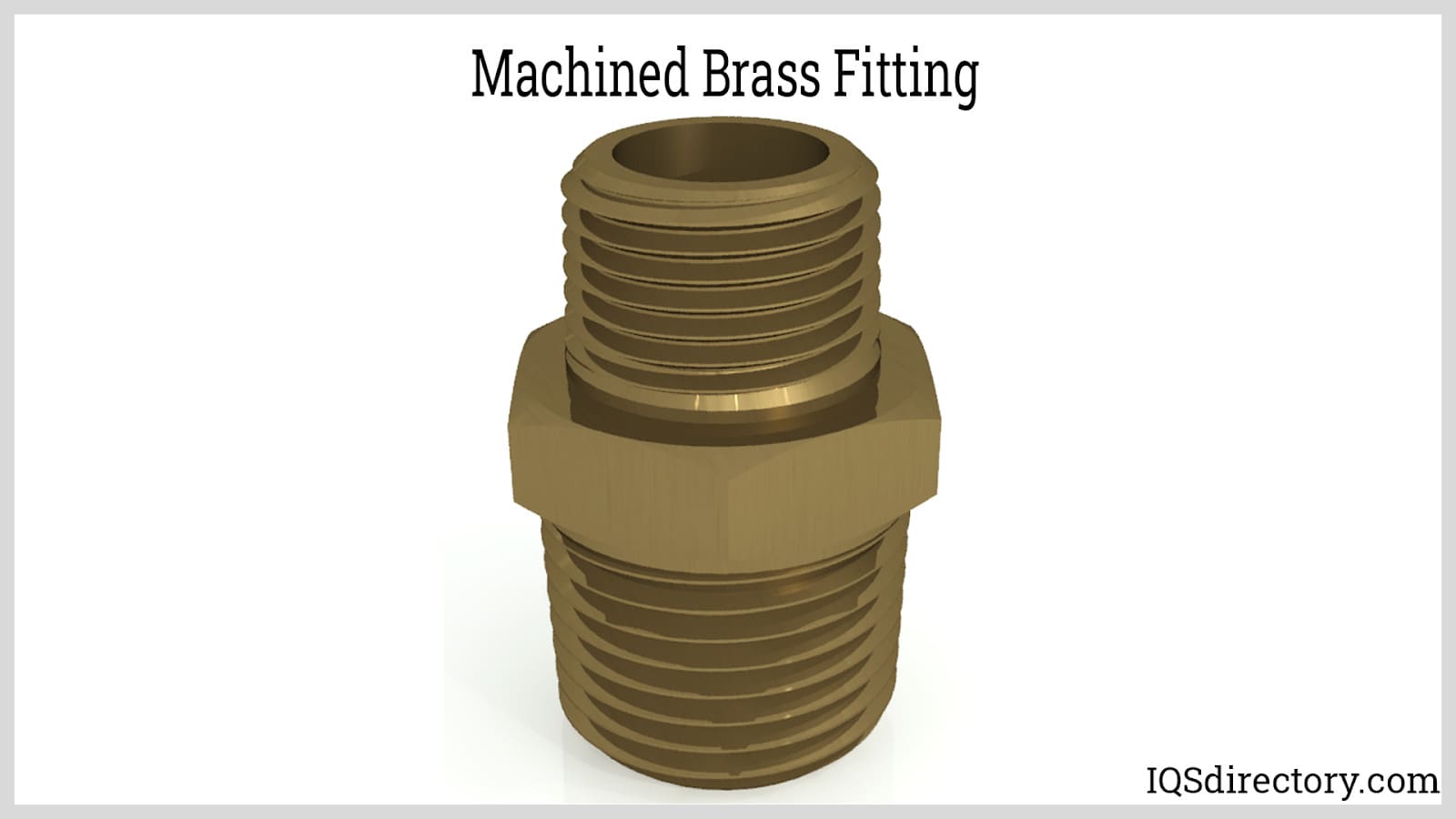
Stock Diameter: The correct stock diameter is almost the same as the pitch diameter of the screw or bolts. Usually, the space or cavity between the threads and below the pitch line is the same as the volume of the thread above the pitch line. Some adjustments for tolerances may be needed to attain the desired crest formation, especially if secondary processes such as coating, or plating are needed to be done.
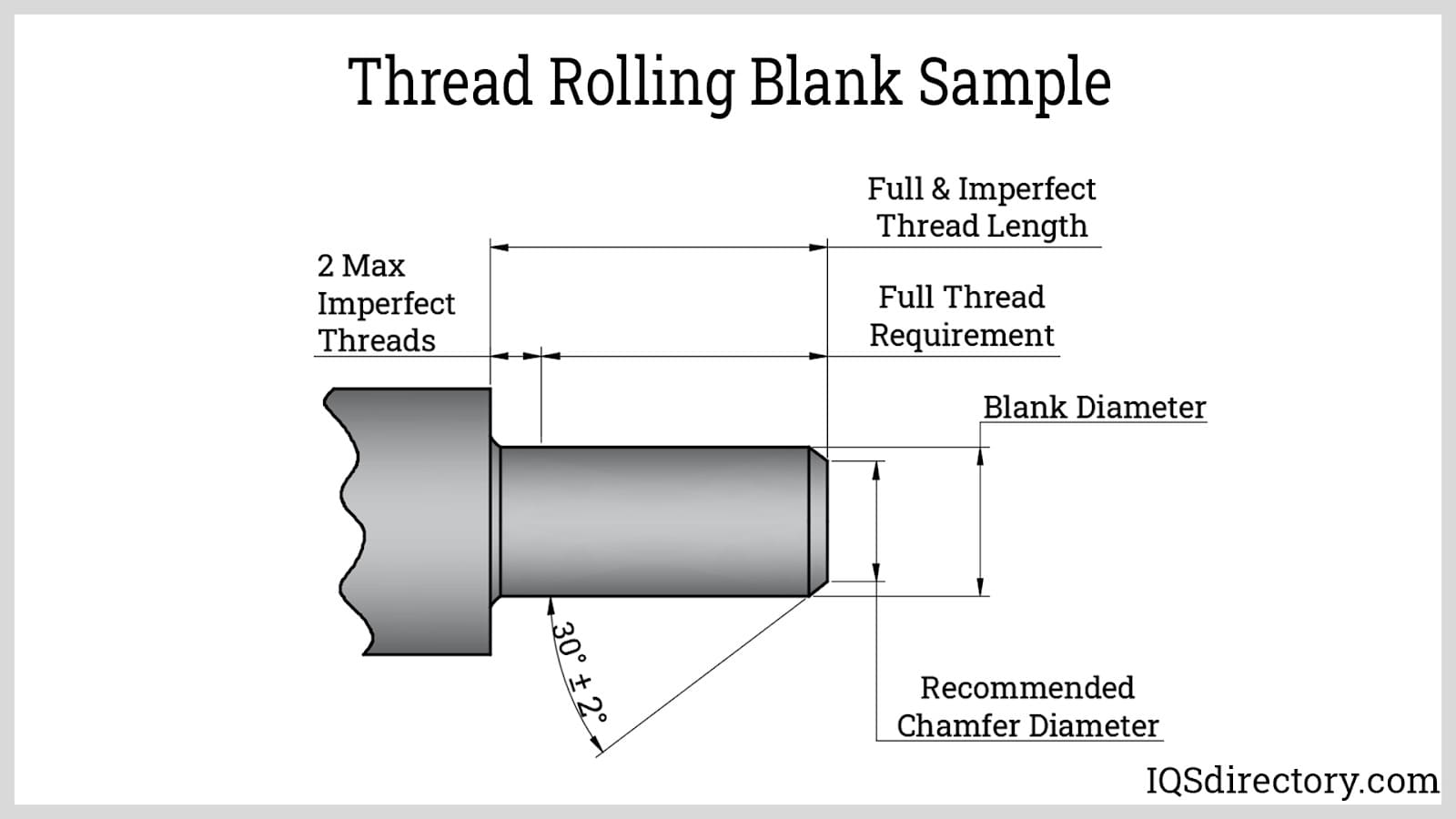
Feeding: There are three basic techniques for feeding the stock into the dies: radial infeed, tangential feed, and through feed. In radial infeed, the dies move radially towards the axis of the stock. For tangential feed, the pitch of the stock approaches the rollers from its side making square, tangential contact. Lastly, through feed involves a cylindrical die that mates against the stock causing it to move axially.
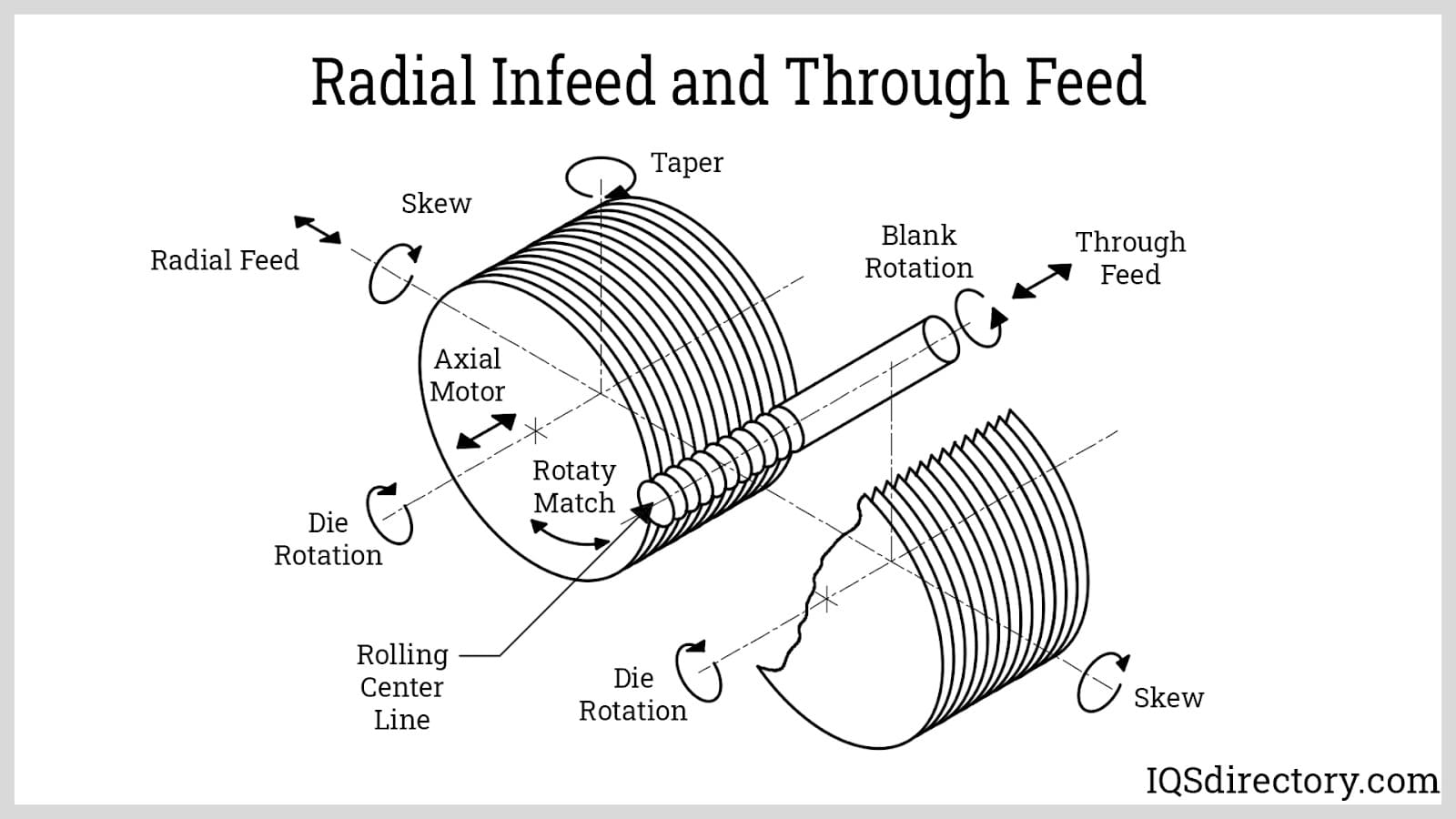
Although the thread rolling process provides higher precision compared to other methods, defects can still occur due to upsets and irregularities in the operation. Common issues include out-of-tolerance stock dimensions, worn or misaligned rollers, and improper stock feeding. The following are the most frequent defects observed in thread rolling.
Truncated Thread Crest: This defect is described by a non-fully formed crest or an excessively truncated crest. One reason could be an undersized stock where there is insufficient material to flow and create the crests. This is fixed by gradually increasing the size of the stock. If the pitch diameter is oversized, then the more probable root cause is a loose threading head which is solved by sizing-in. If not, then the defect is possibly caused by too much hardness of the material. Thus, it is then necessary to change into a softer material.
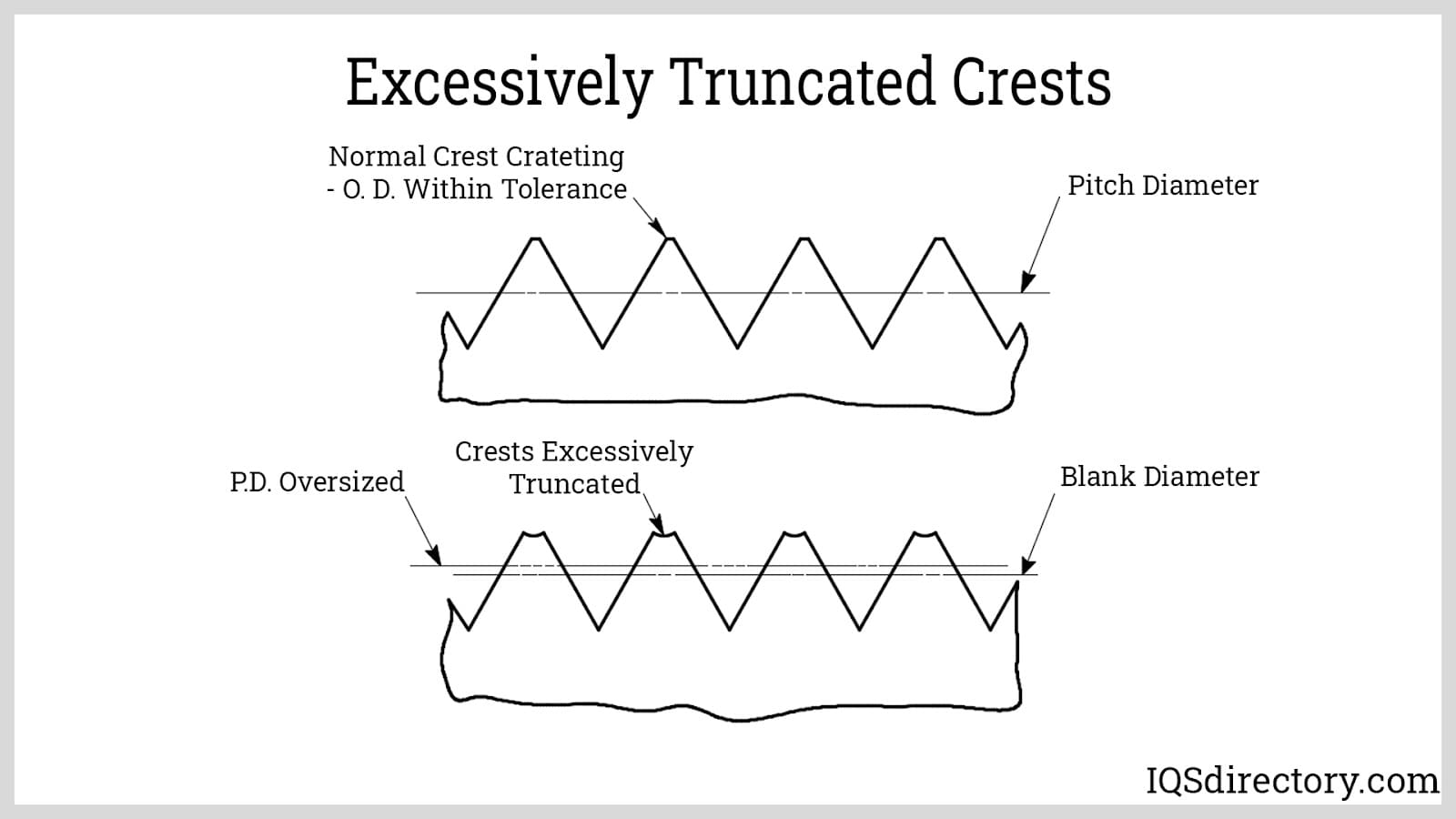
Curved Pitch Line: This is viewed as the tapering of the threads towards the ends of the threaded segments of the bolt or screw. The curvature can be concave or convex. Its root causes are inconsistent stock diameter, misaligned stock relative to the roller, wearing of rollers, or too much deformation of the material causing it to flow towards the end of the stock.
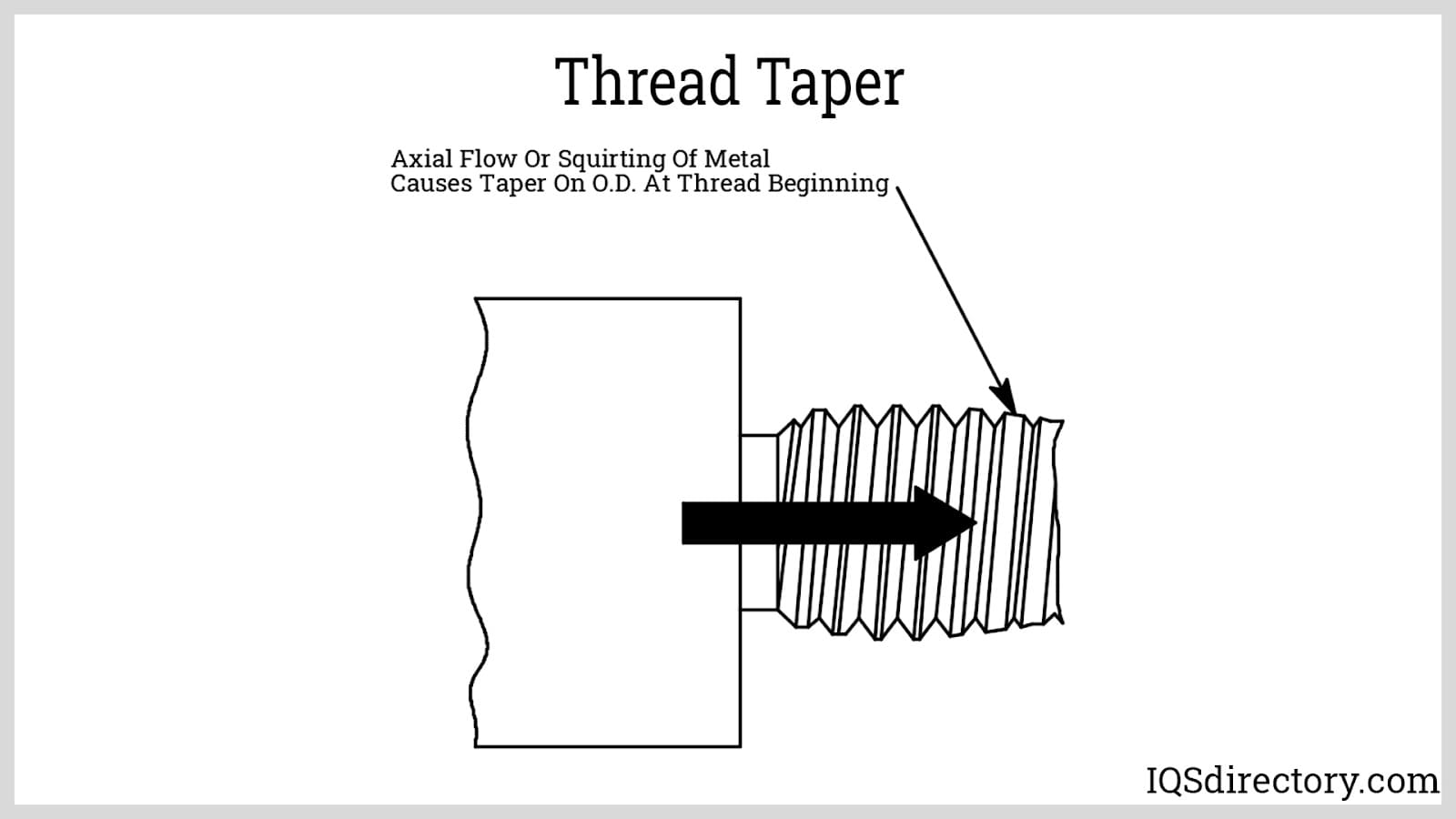
Cupped End: A cupped end appears as a concave-end caused by forcing the metal to flow over an insufficient chamfer. This is more evident on softer metals. The defect is solved by properly chamfering the stock, usually about 30°.
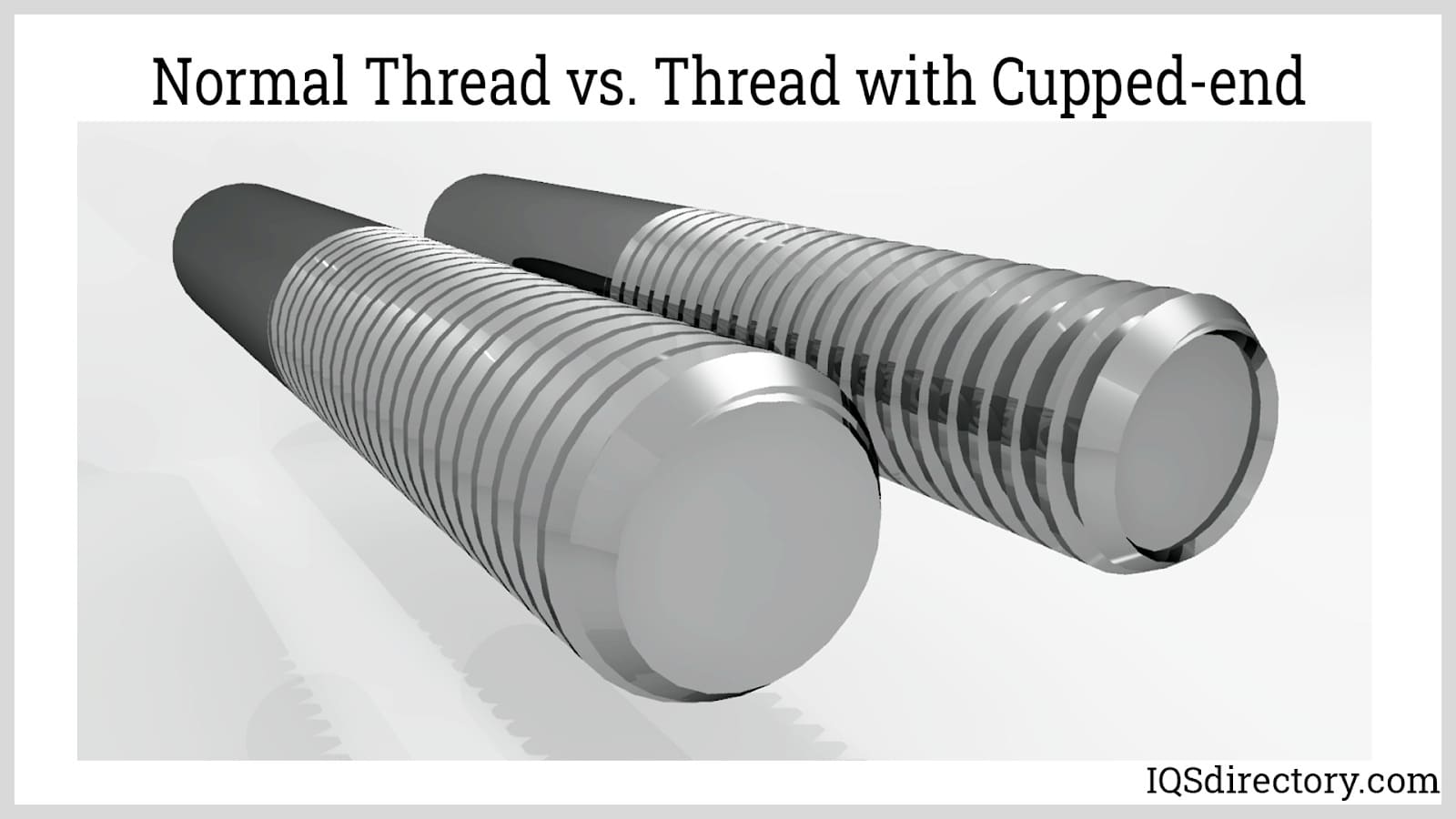
Thread rolling is a straightforward process that begins with cutting a metal bar to length and forging it to create the bolt or screw head. Next, the bar is machined to achieve the correct stock diameter and a chamfer on one end. The prepared stock is then fed into the threading machine, where it passes through dies to shape the thread. After the thread is rolled, the stock undergoes secondary processes such as plating, anodizing, and coating.
This process summary applies to all types of thread rolling. However, thread rolling machines differ based on the type of die used. They can be categorized into flat-die, planetary, or cylindrical-die types.
Flat-die Type: This type of thread rolling machine consists of two rectangular dies where one is stationary while the other is reciprocating. The reciprocating die moves parallel to the stationary die. The surface of the dies contains ridges representing the profile of the thread to be produced. These ridges are inclined at an angle equal to the helix angle of the thread. The distance between the crests of the dies is equal to the minor diameter of the thread.
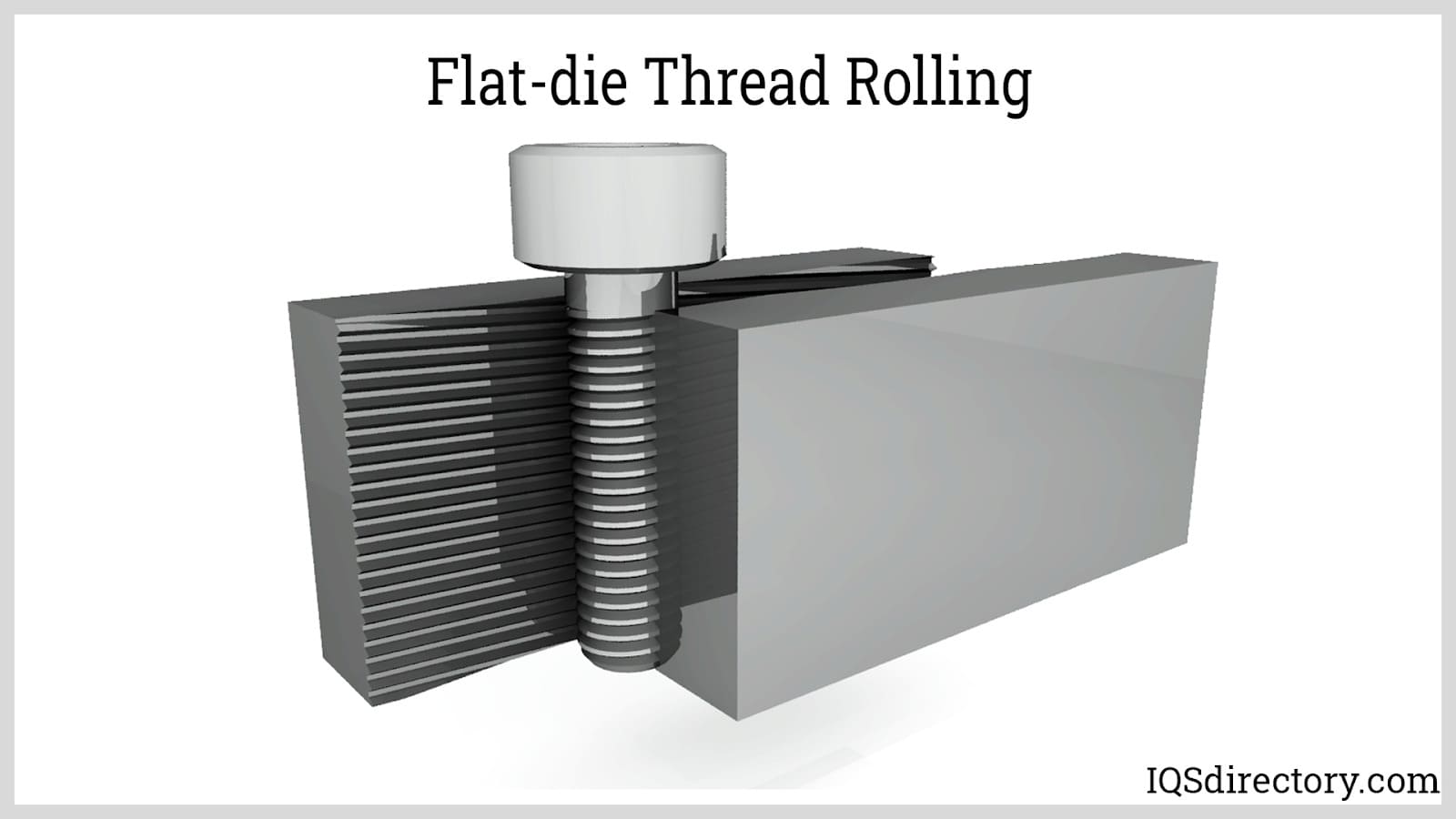
The threads are formed typically in one passage only. The length of the die allows the stock to be rolled around six to eight times. The stock is inserted on one end, either manually or automatically. The dies roll the stock tangentially which carries it up to the opposite end by friction.
Segment or Planetary Type: A planetary type operates by rolling the stock through one stationary and one moving surface. However, this machine uses rotating motion instead of translation. This type involves stationary curved dies and a central rotating die. One or more stationary dies can be matched with a single rotating die. A stationary die rolls one stock at a time.
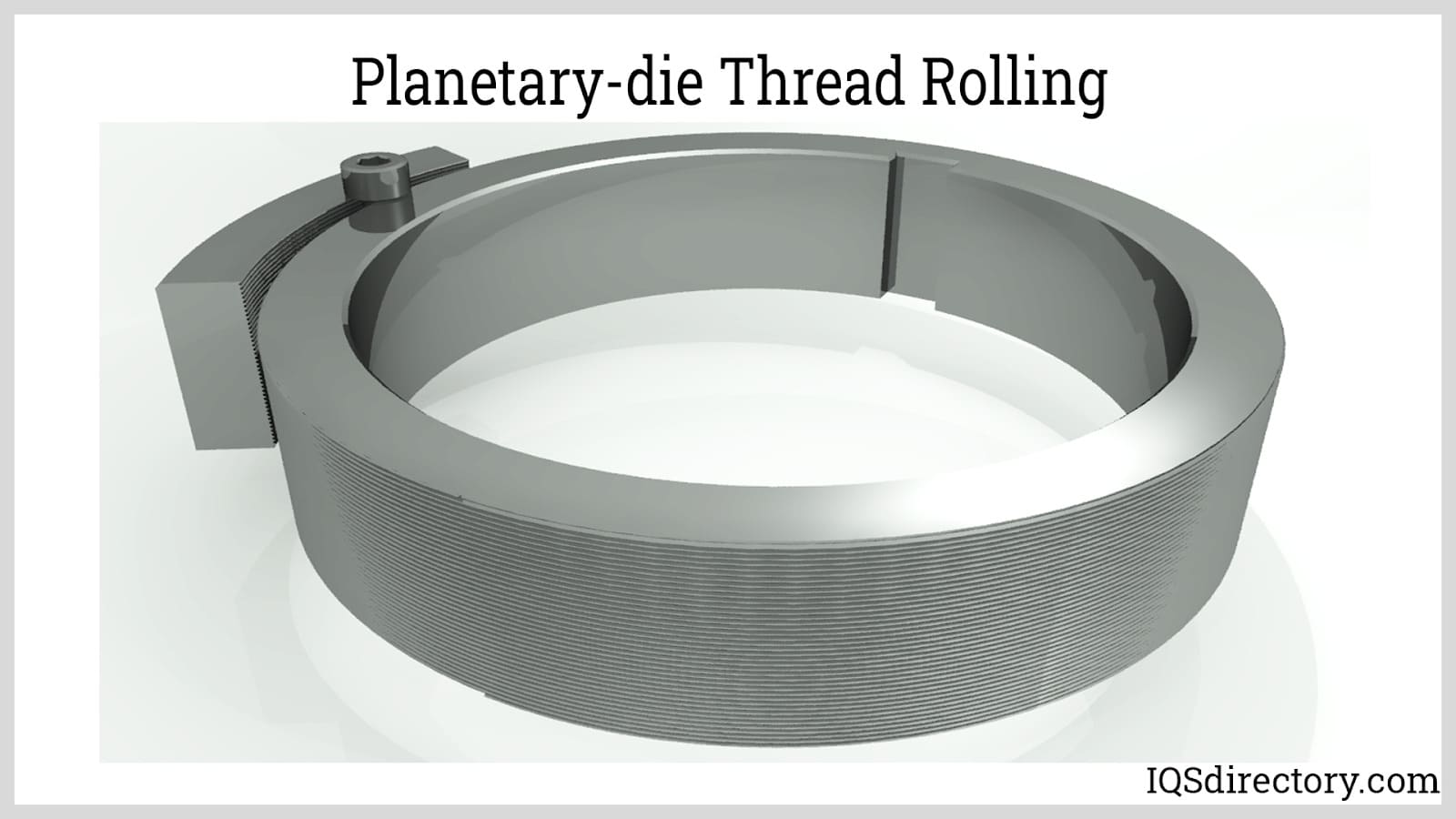
Similar to the flat-die type, the planetary machine has a finite rolling surface that forms the thread through one passage. The stock is inserted on one end of the curved die. The rotating die then rotates a full arc of the curved die revolving the stock until ejected on the opposite end.
Cylindrical-die Type: Cylindrical dies or rollers are regarded as dies with infinite work surfaces. These machines usually operate through the combination of radial and through feeding. Unlike the flat-die and planetary types, the cylindrical-die type deforms the metal through multiple passes as it rolls. Cylindrical-die type machines can be further divided into two major categories: two-die and three-die machines.
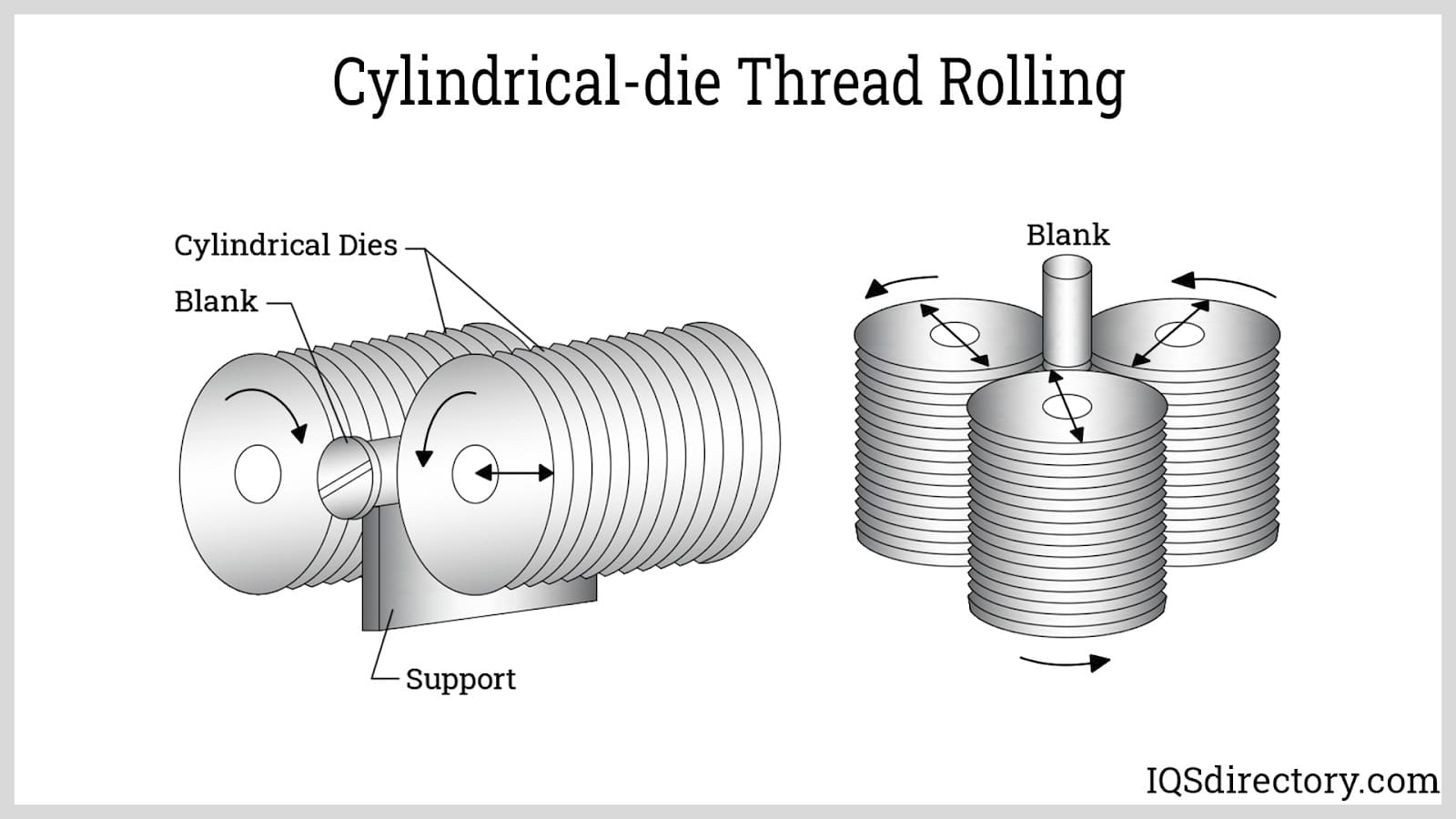

Screw machined parts are complex pieces that are typically cylindrical and threaded and a screw machined product is a family of automatic lathes for small to medium-sized components...
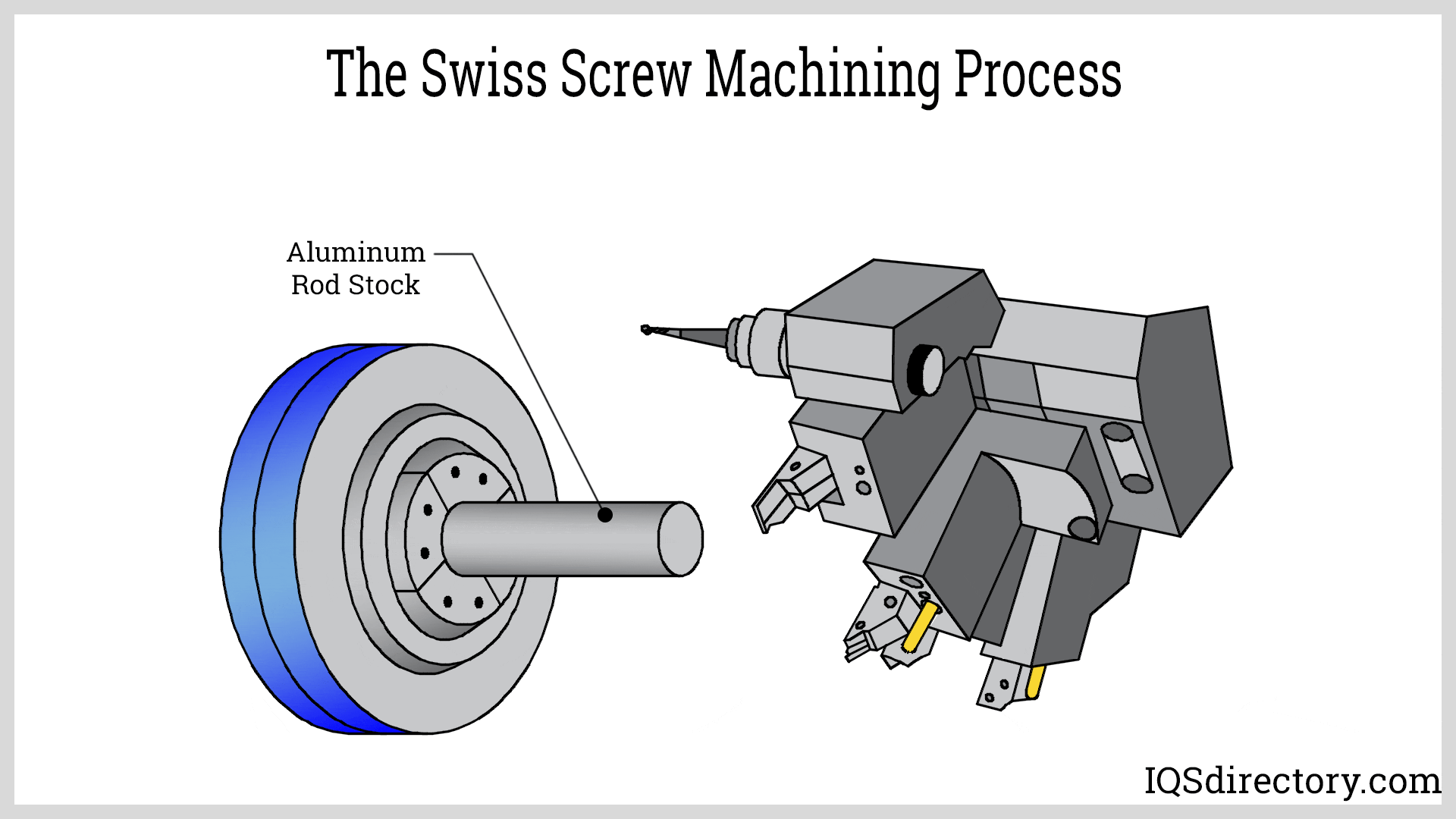
Swiss screw machining is a process for producing high precision parts in high volume using an automatic lathe that is programmed to perform every aspect of the cutting process. The method used for...
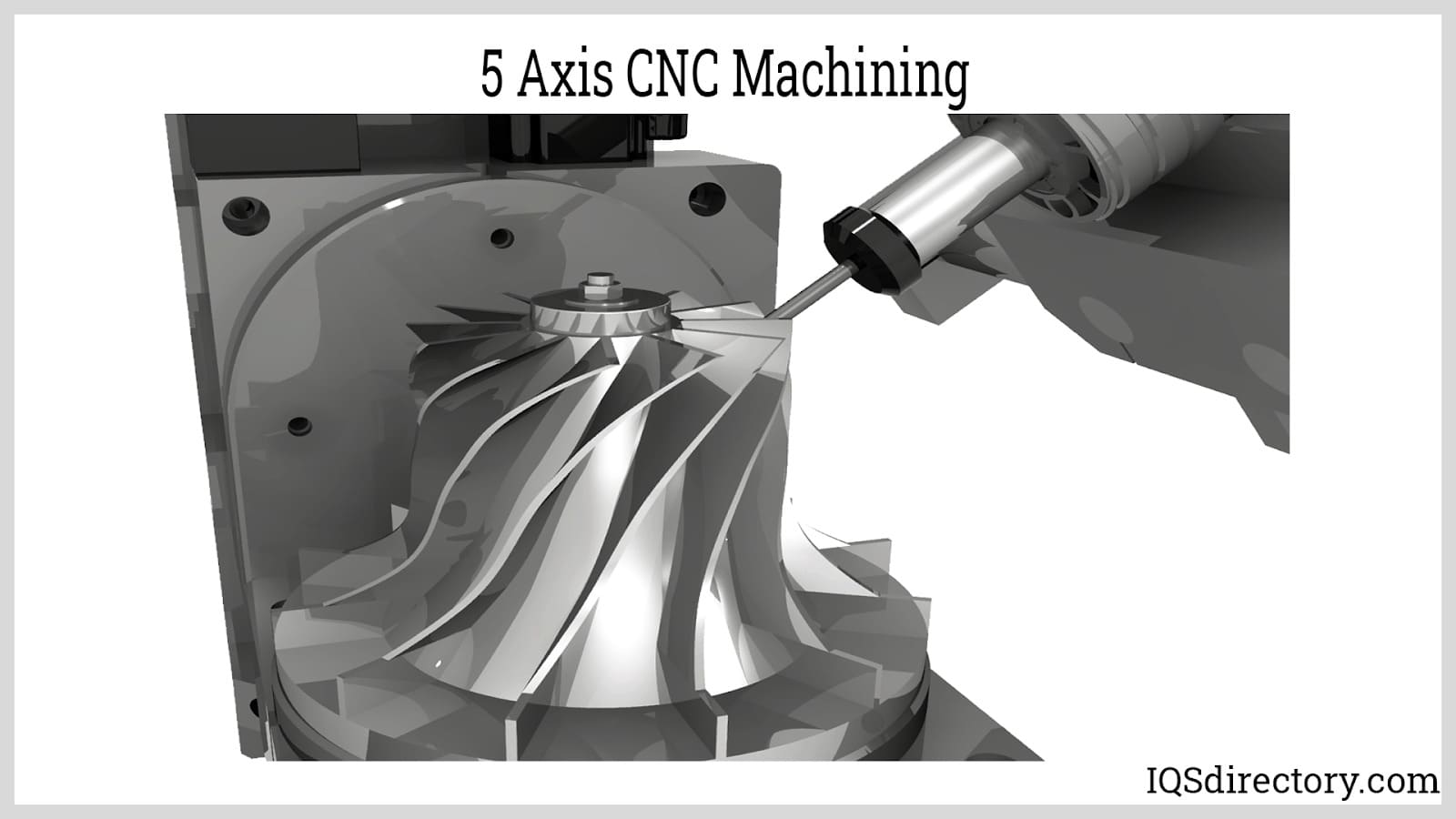
The normal functioning of CNC machines is done along the three Z, X, and Y axes. The five axes machines have two more axes accessible, which are namely A and B. The addition of the two extra axes makes it easy to cut complex and intricate parts...
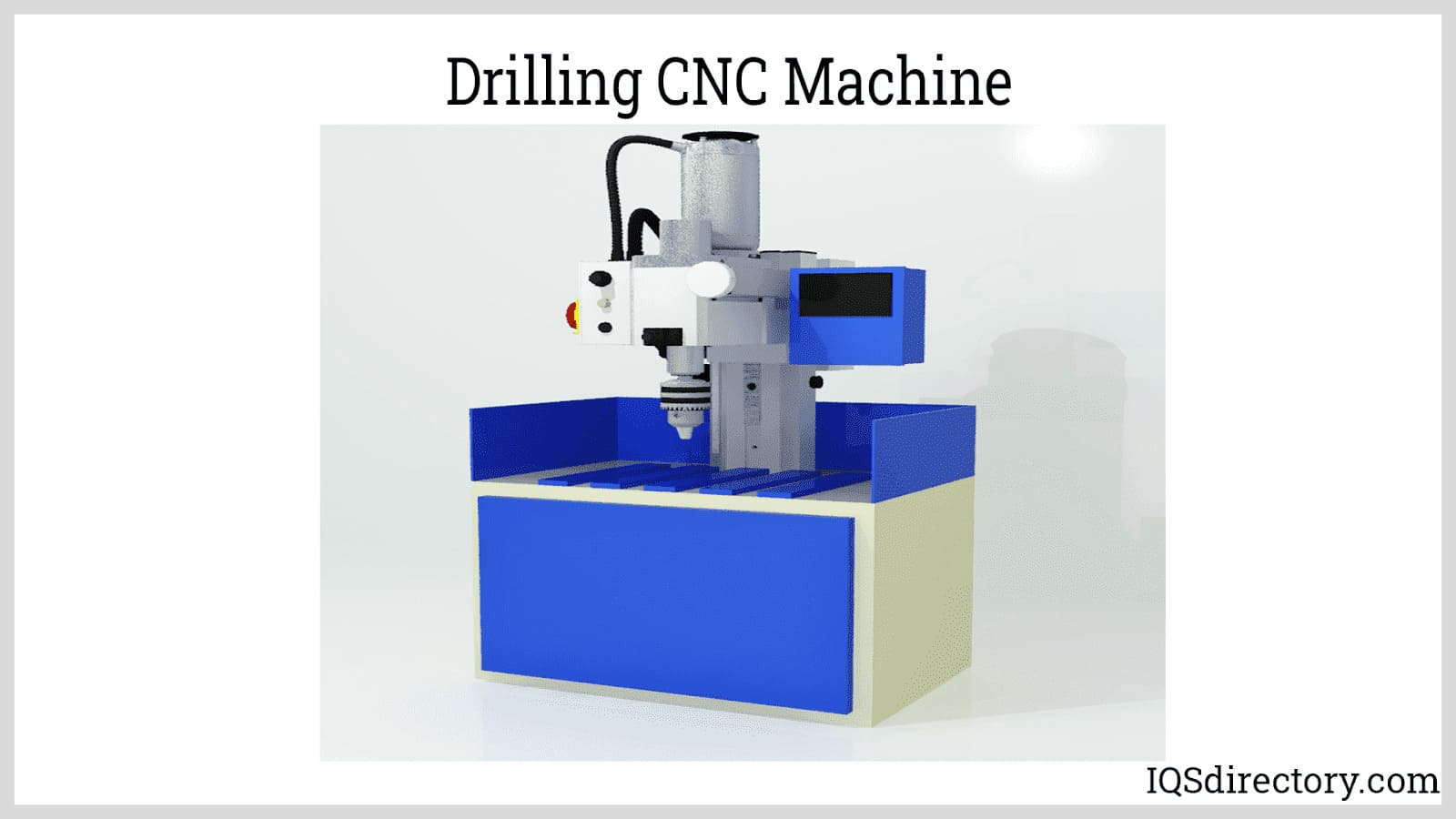
CNC machining is an electromechanical process that manipulates tools around three to five axes, with high precision and accuracy, cutting away excess material to produce parts and components. The initial designs to be machined by CNC machining are created in CAD...
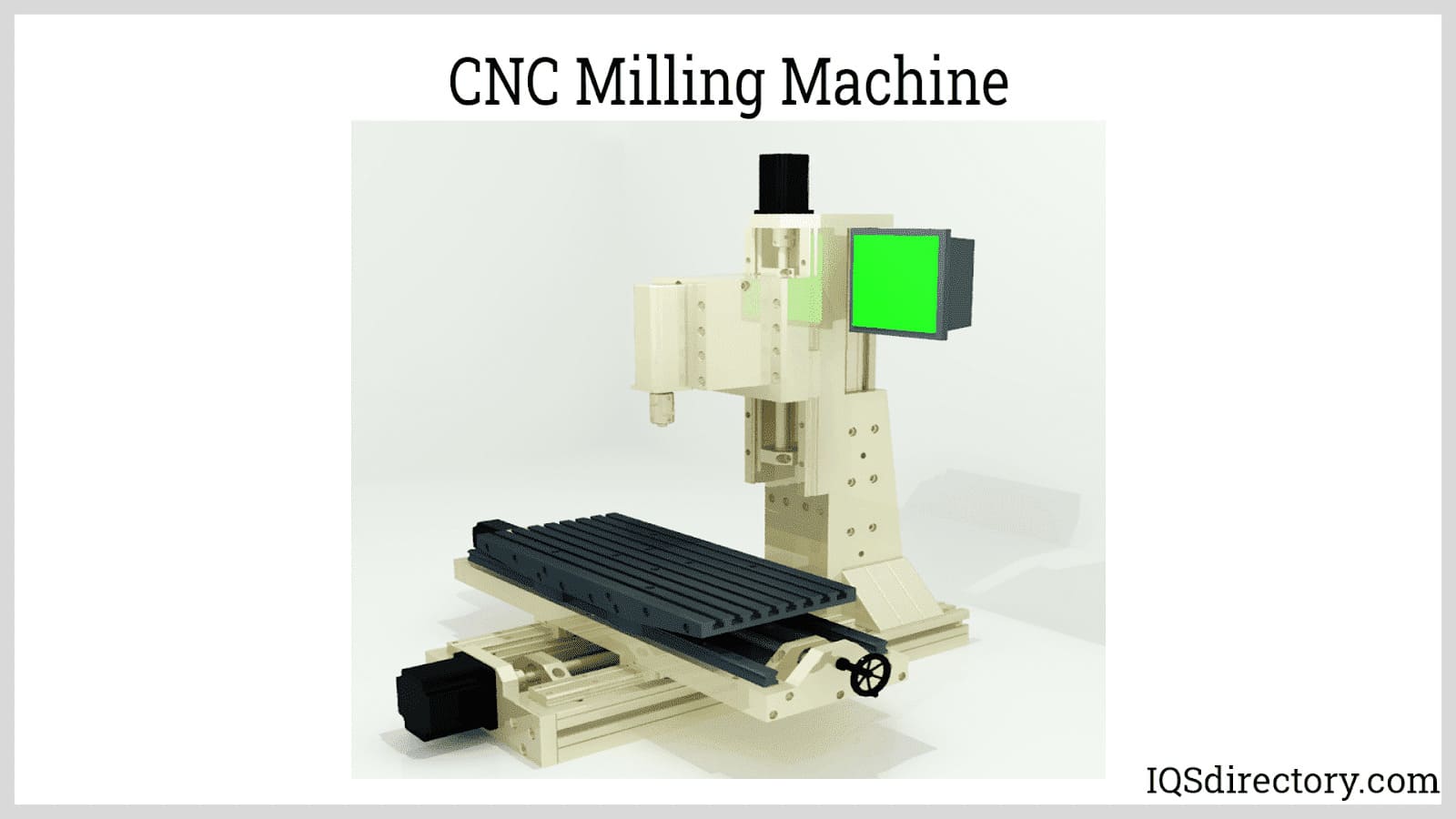
The CNC process was developed in the 1950‘s and took a leap forward in the 1980‘s with the addition of computerization. Unlike other production processes, CNC begins with a rendering by a computer, which creates a two or three dimensional representation of the part to be produced...
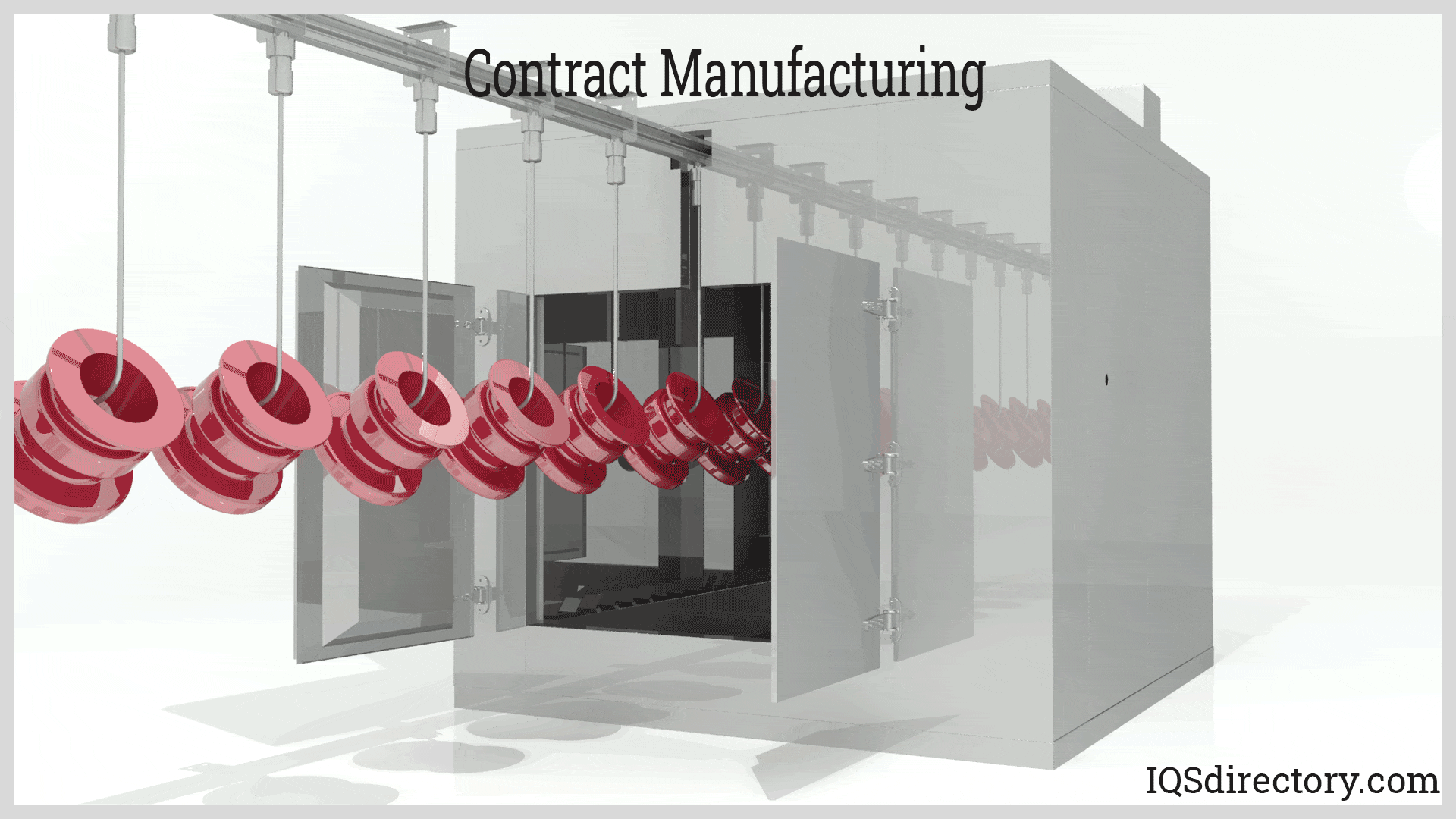
Contract manufacturing is a business model in which a company hires a contract manufacturer to produce its products or components of its products. It is a strategic action widely adopted by companies to save extensive resources and...
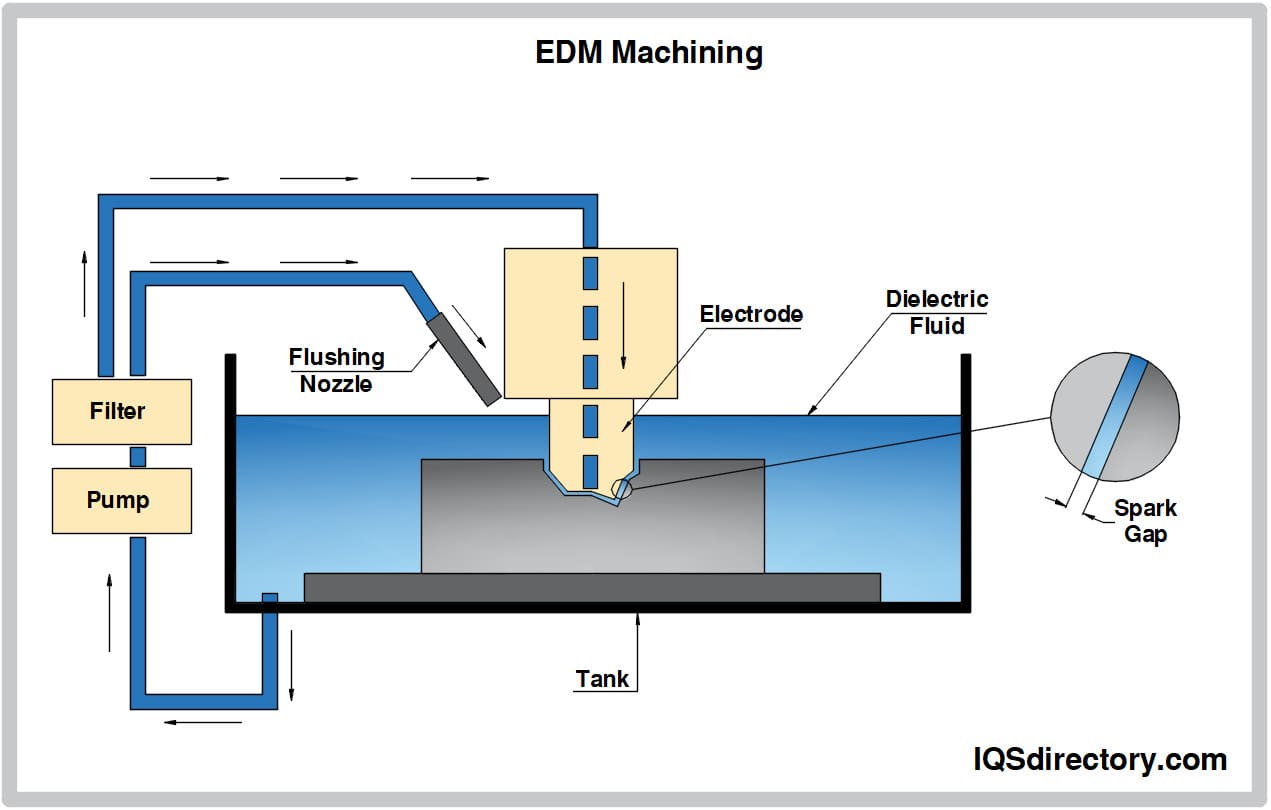
EDM machining is a contemporary machining method based on the removal of material from a part using thermal energy. The material is removed by local melting or vaporizing small areas on the surface of the part being machined...
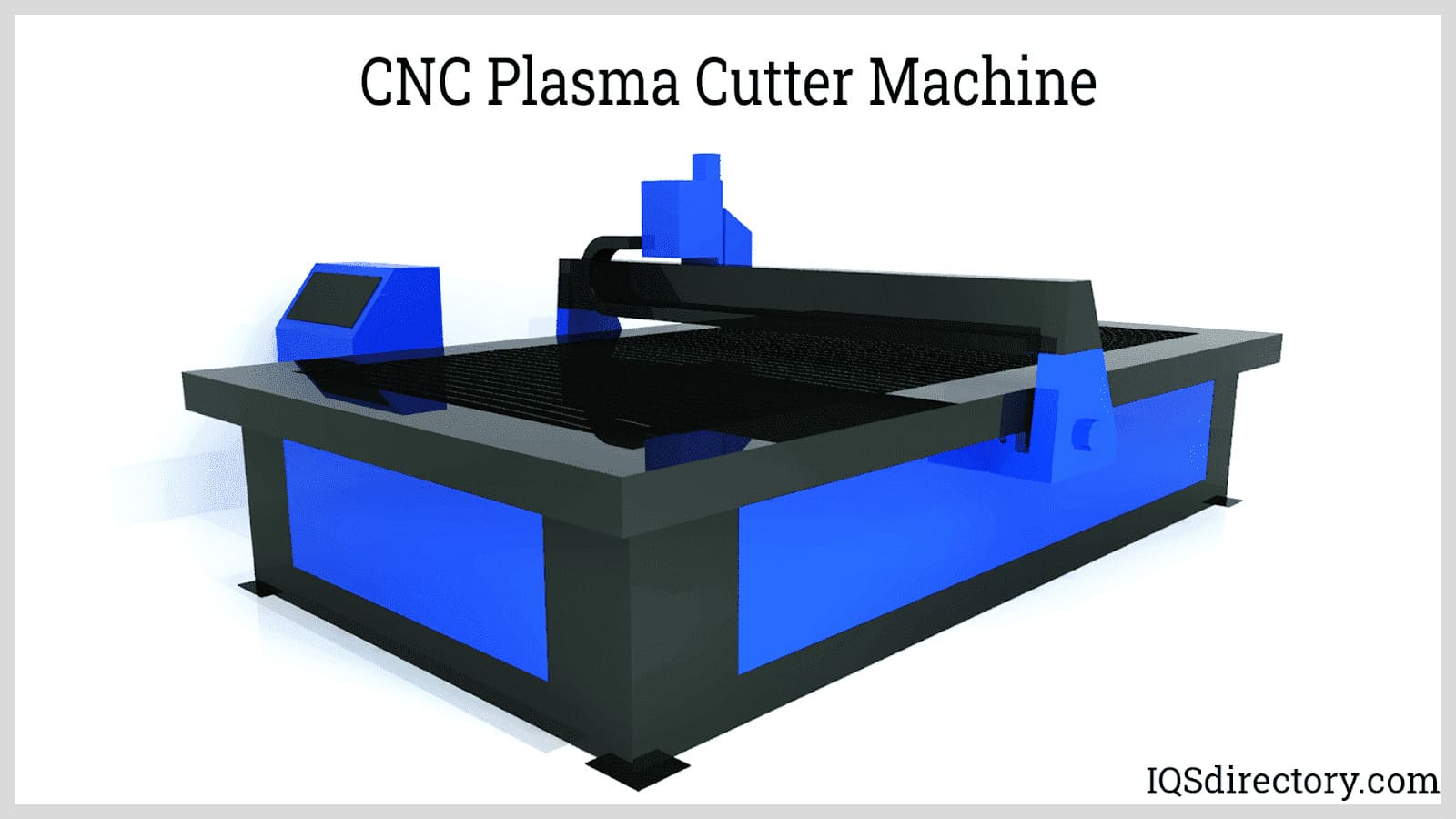
G-code is the name of a plain text language that is used to guide and direct CNC machines. For most modern CNC machines, it isn‘t necessary to know the meaning of G-codes since CAD and CAM software is translated into G or M codes to instruct a CNC machine on how to complete a process...
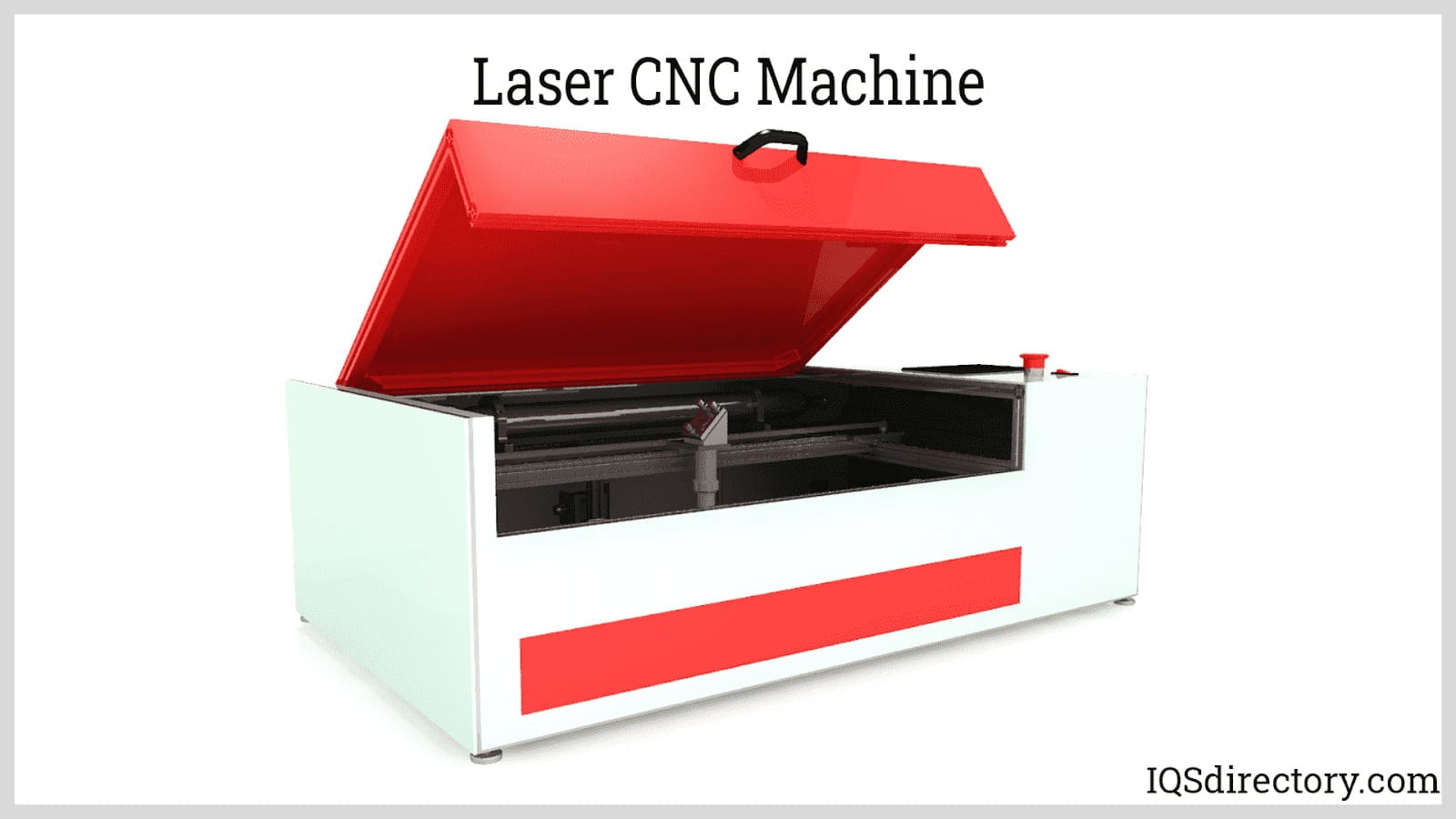
Computer numerical control (CNC) is a fundamental part of modern manufacturing. The majority of machines operate using instructions and guidelines that have been downloaded using a CNC program controller...
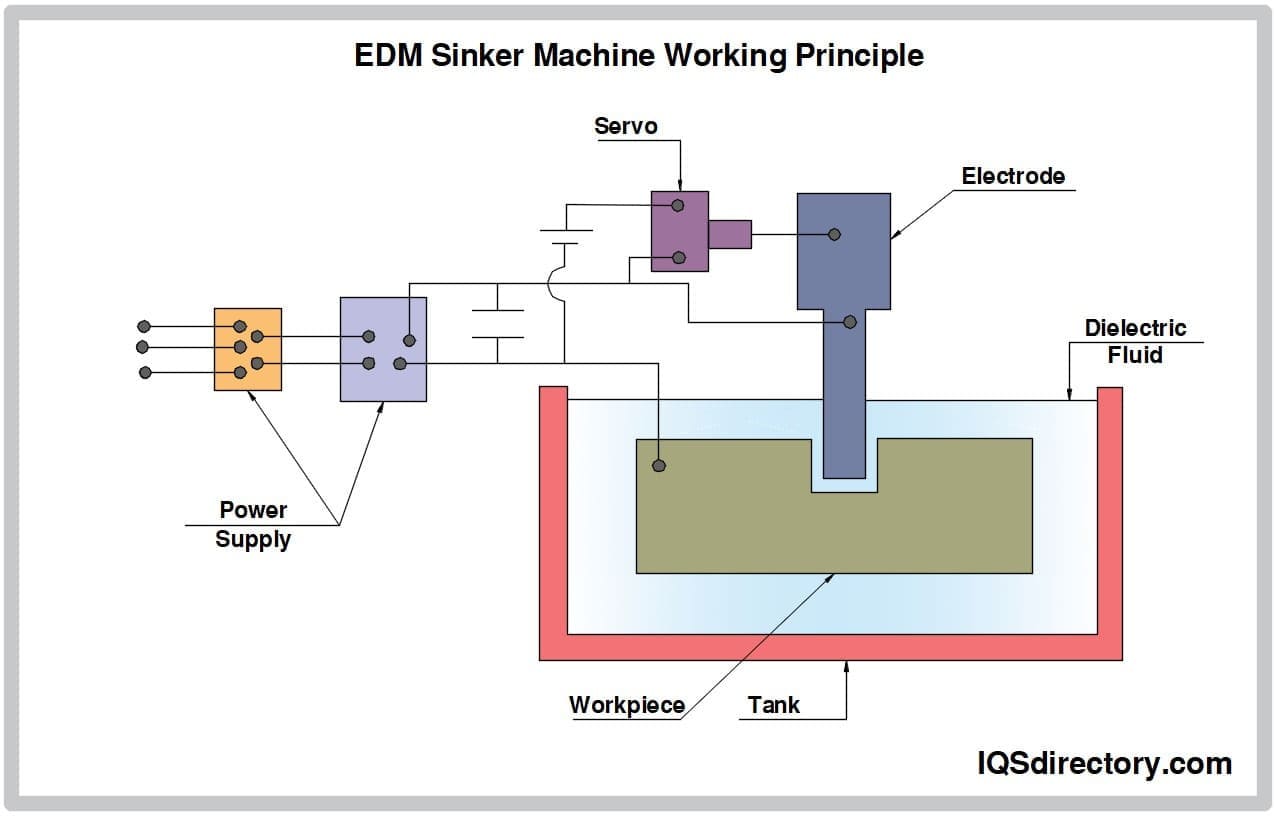
Sinker Electrical Discharge Machining (EDM) is a metal machining process used to create molds, dies, and parts using electrical sparks to erode material from a workpiece. It is preferred over other machining processes due to...
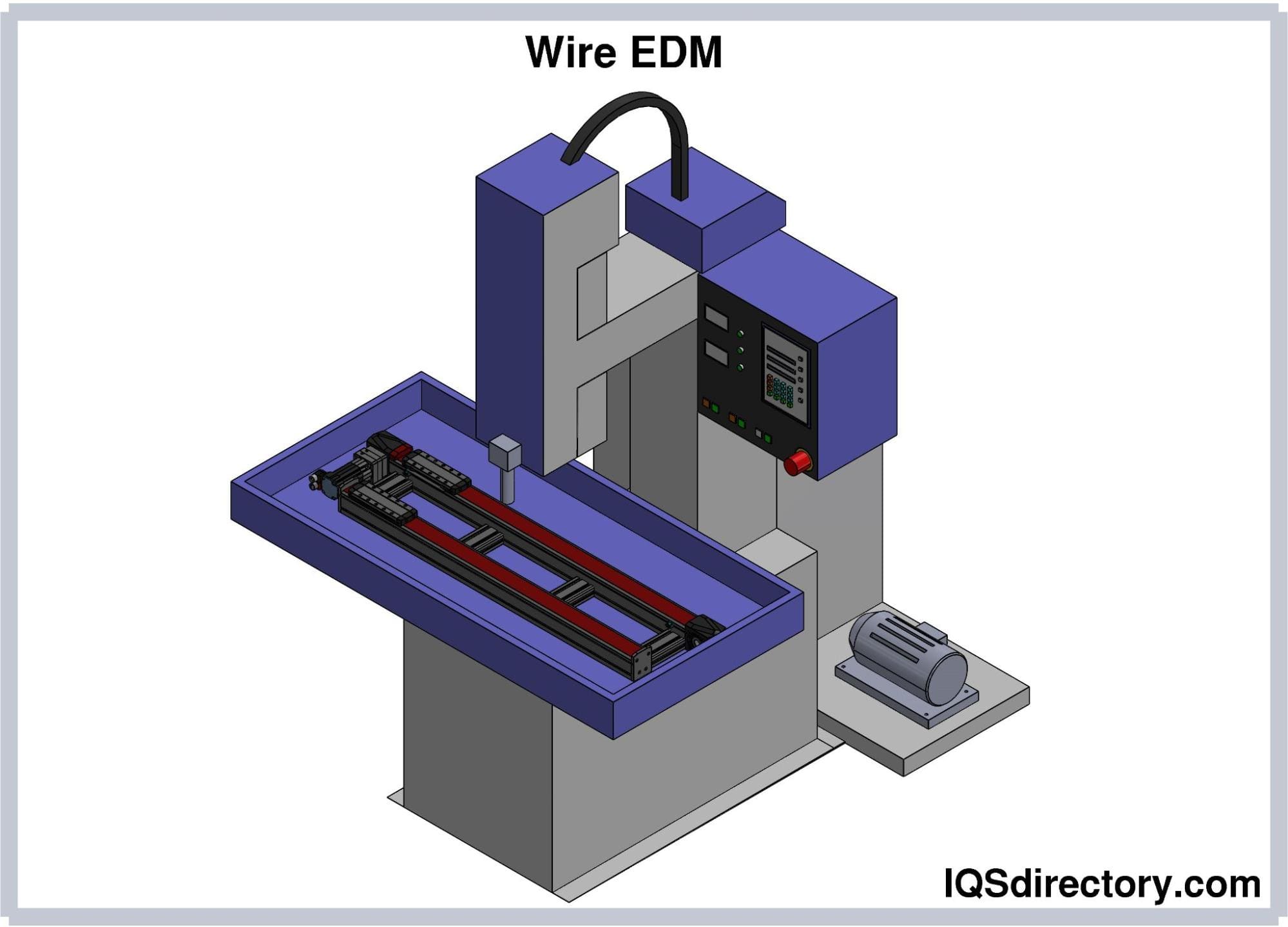
A method of precision machining called electrical discharge machining (EDM) removes material from a workpiece using thermal energy rather than mechanical force. A thin, single-strand metal wire and deionized water used to...
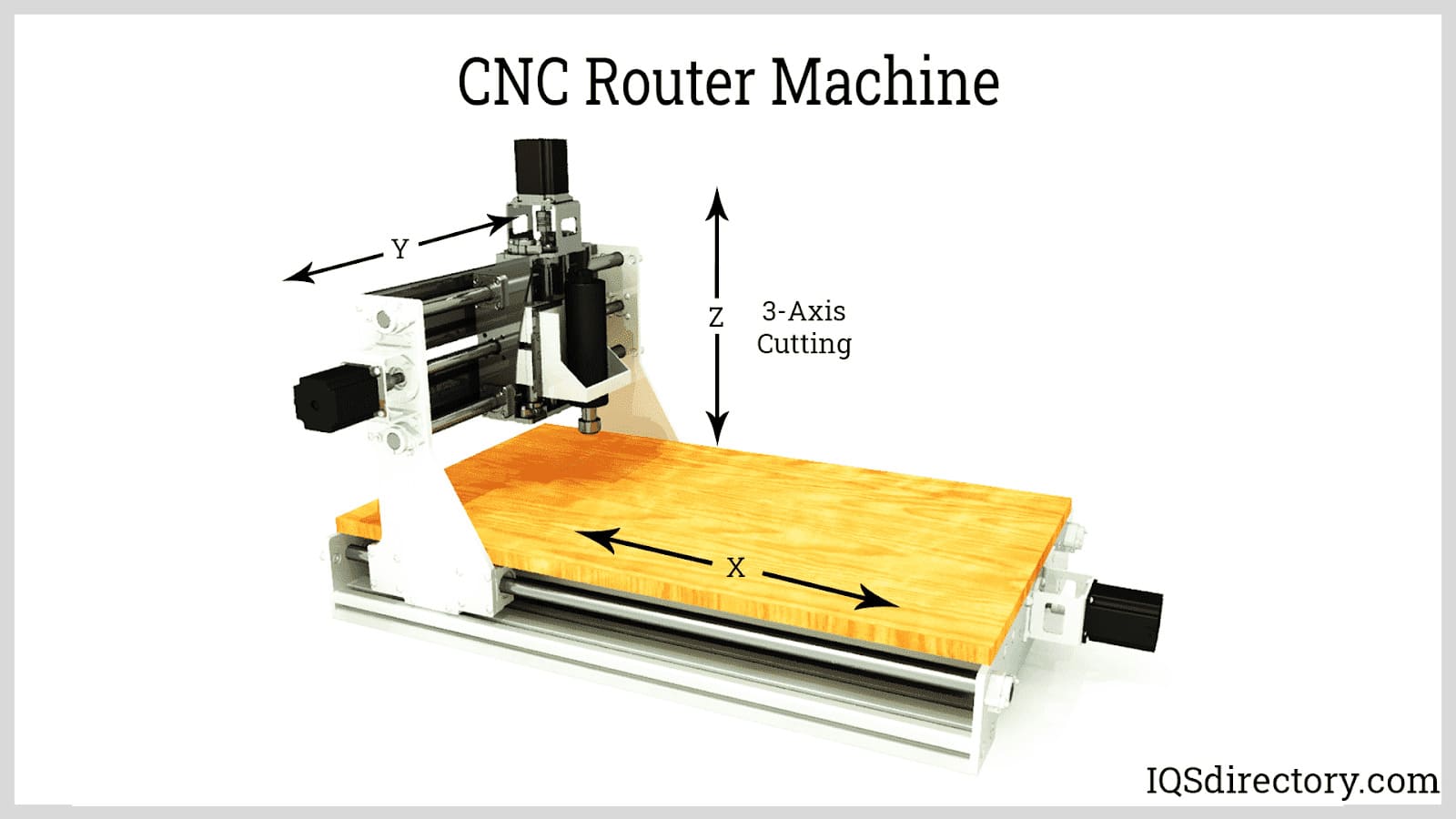
Machining is a manufacturing process used to produce products, parts, and designs by removing layers from a workpiece. There are several types of machining that include the use of a power driven set of machining tools to chip, cut, and grind to alter a workpiece to meet specific requirements...
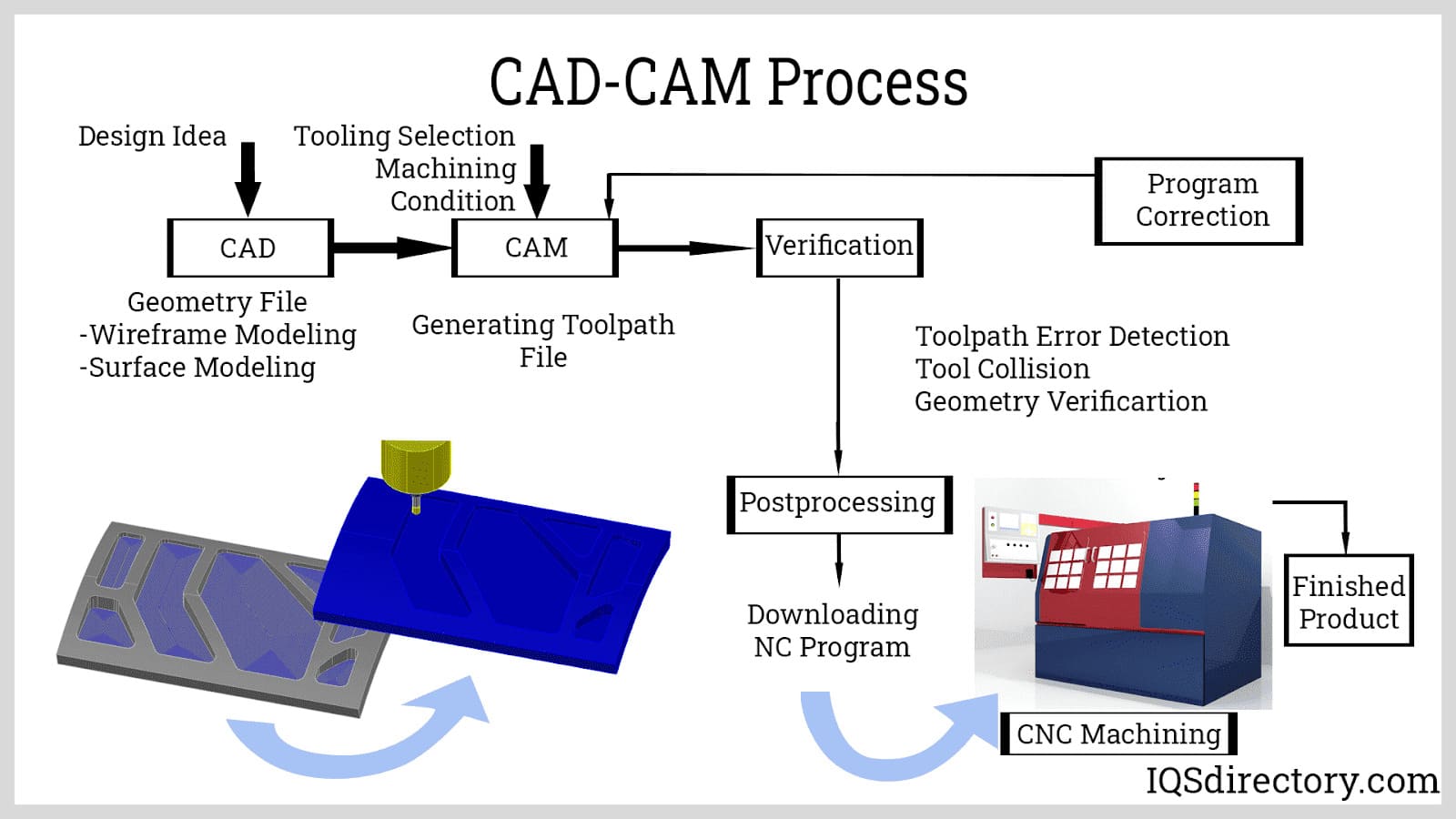
The CNC process, computer numerical control, is a method of manufacturing where programmed software directs the operation of factory tools and machinery. It is designed to manage a wide range of complex machines from grinders and lathes to mills and routers...